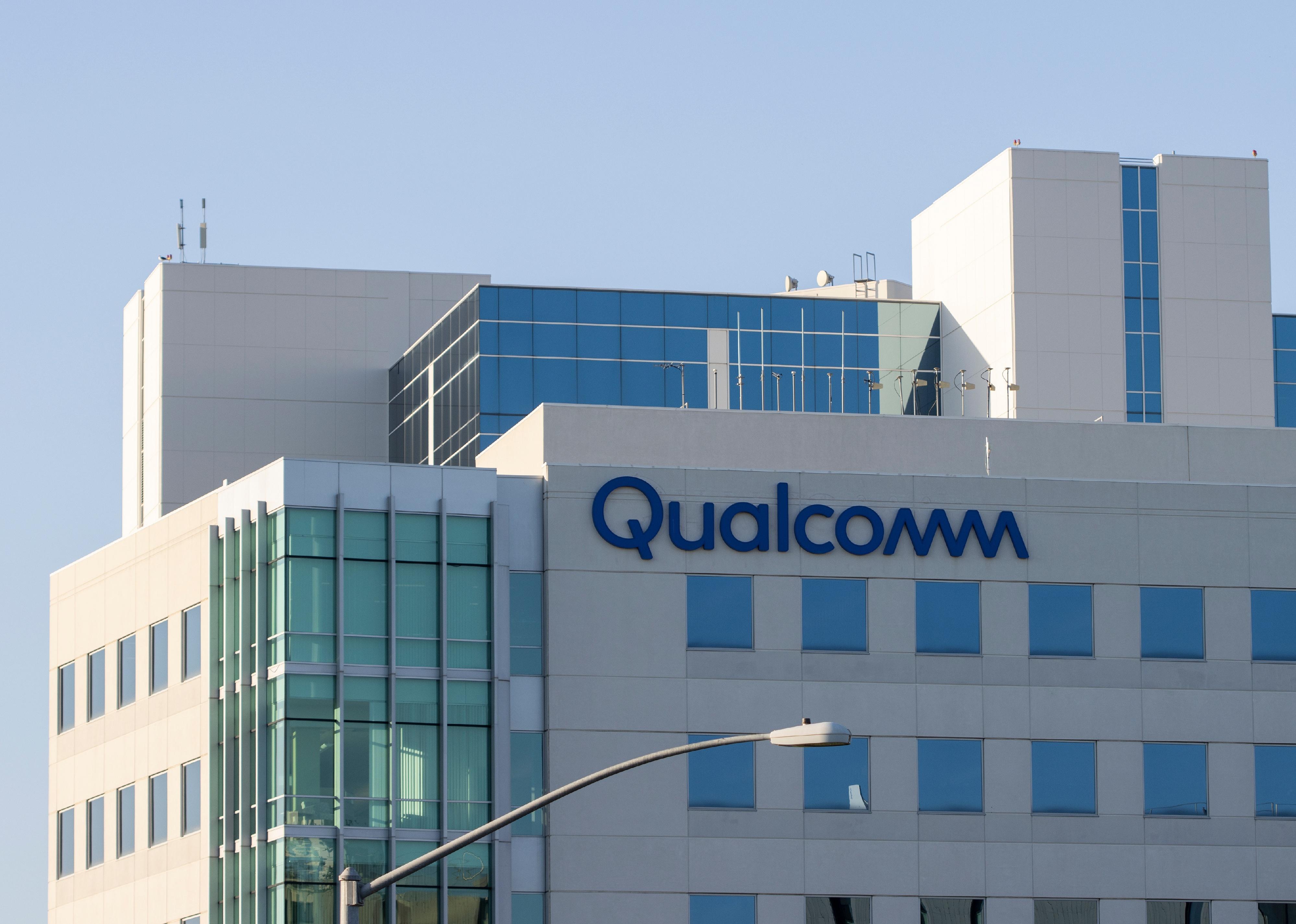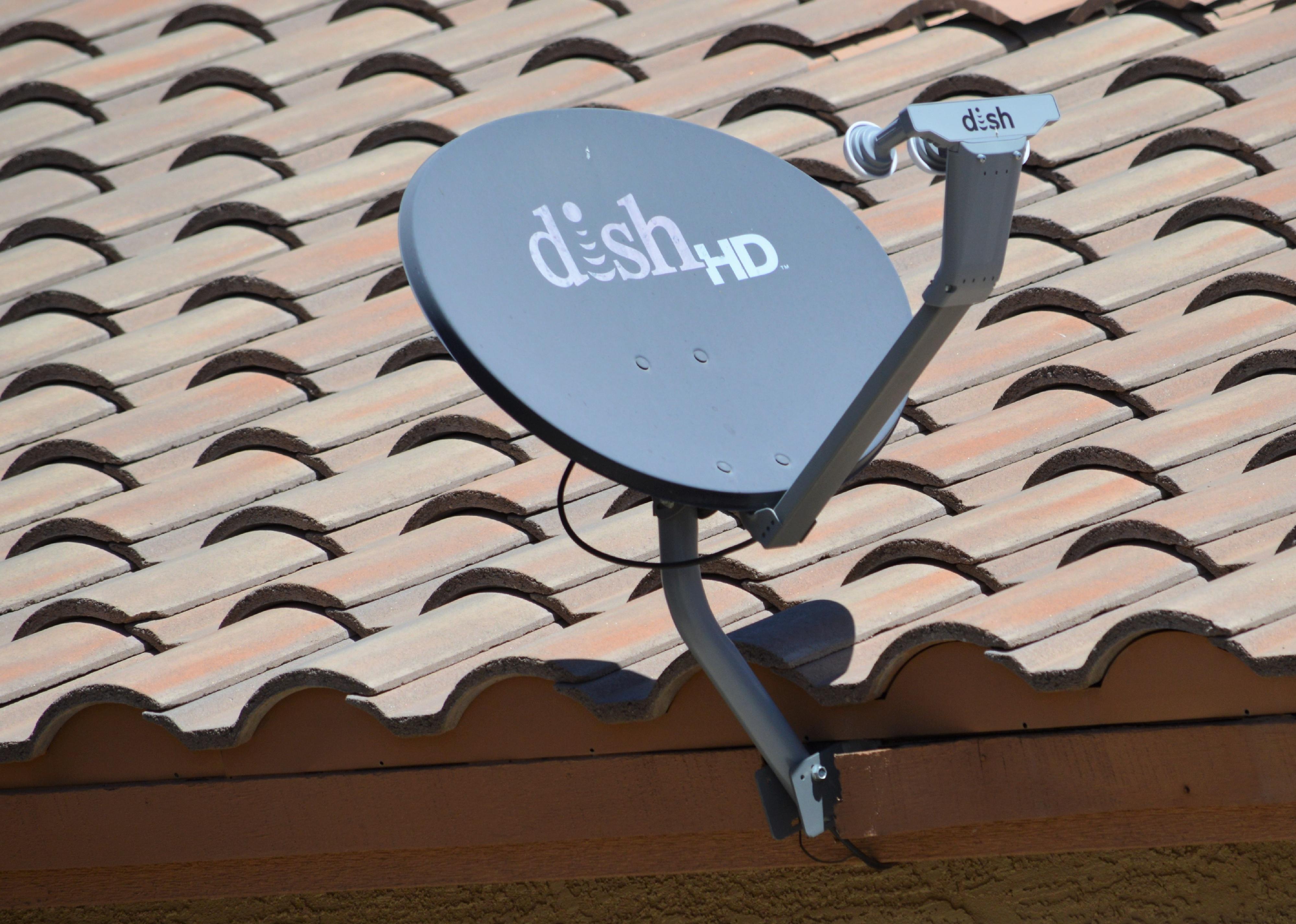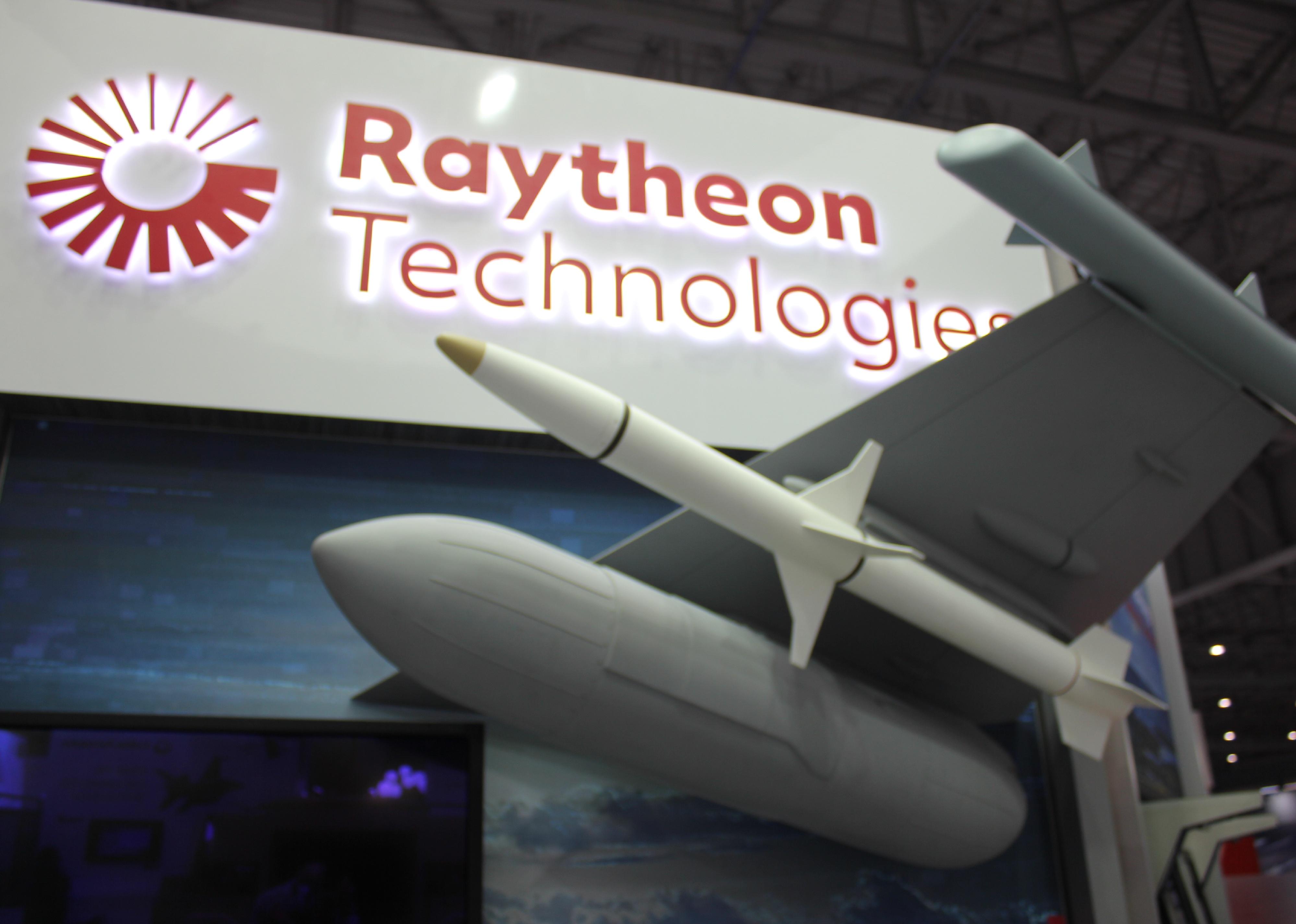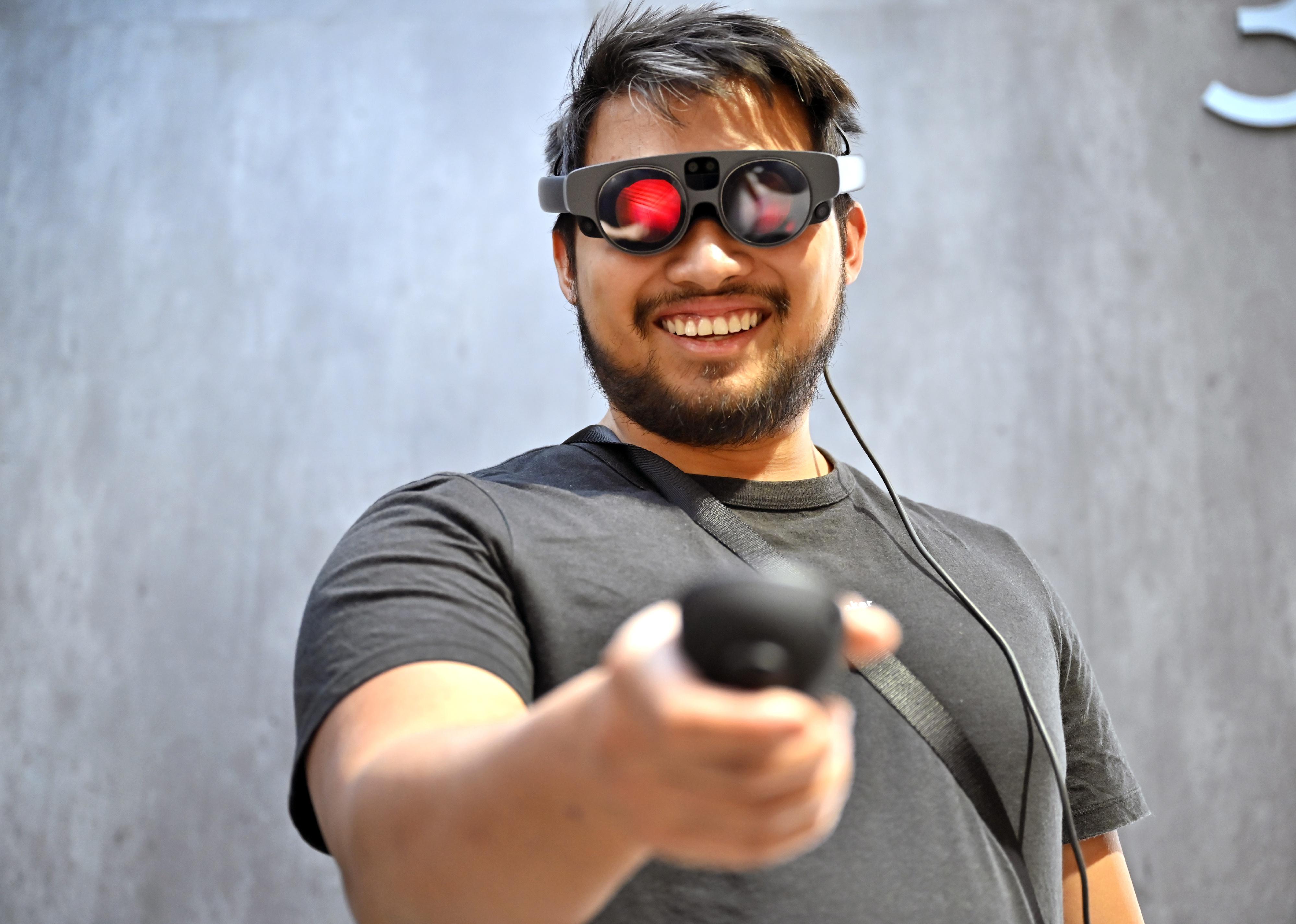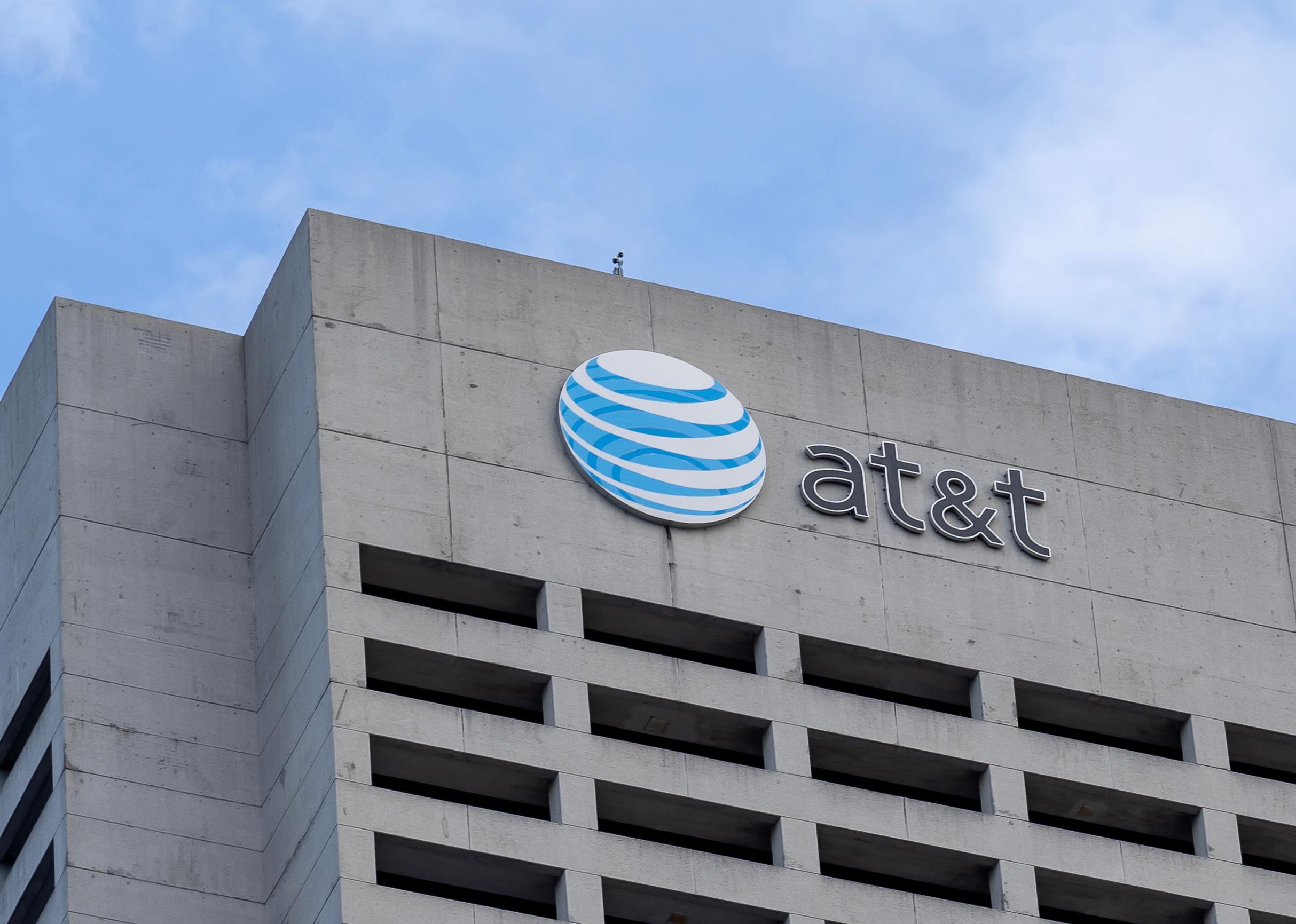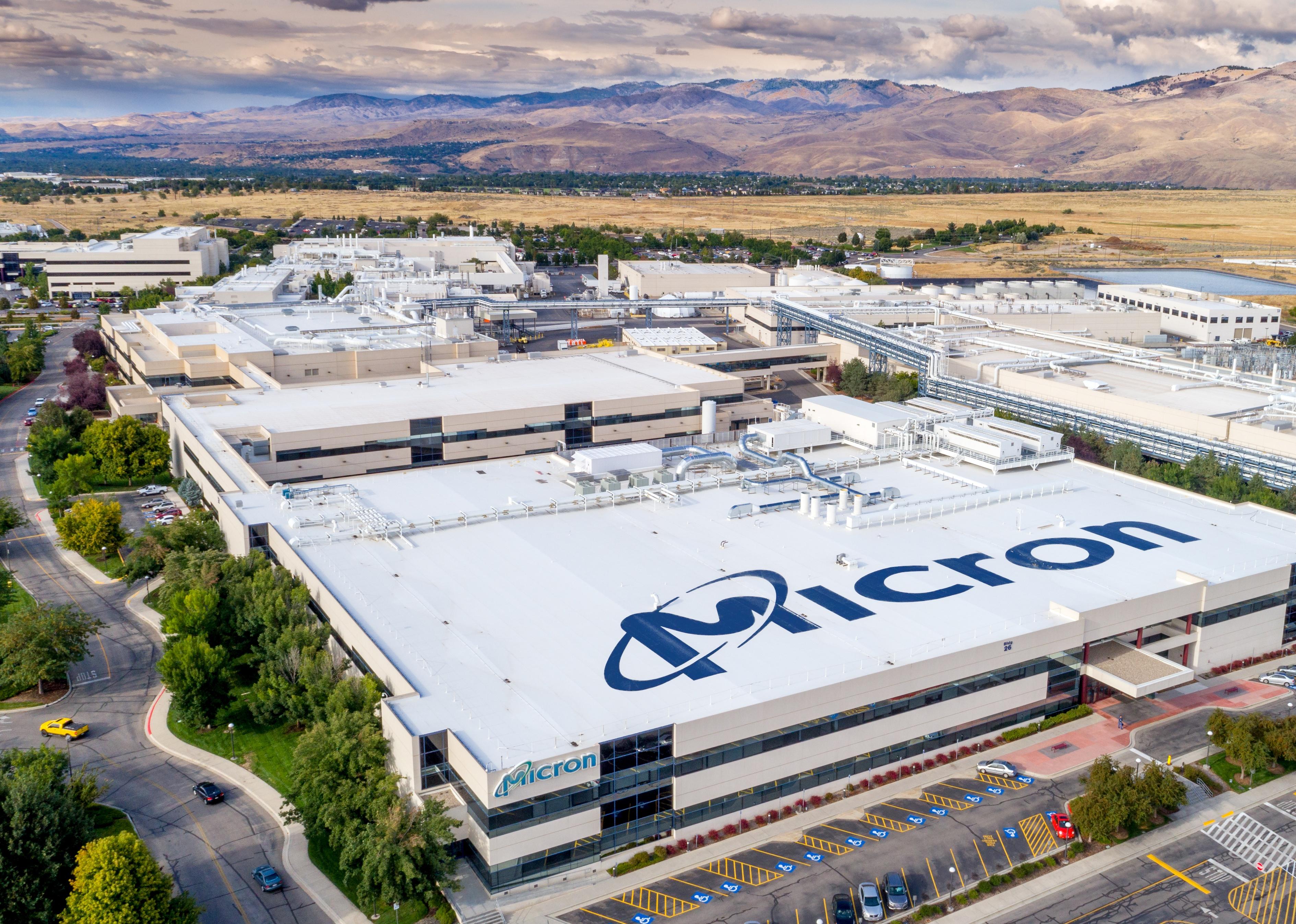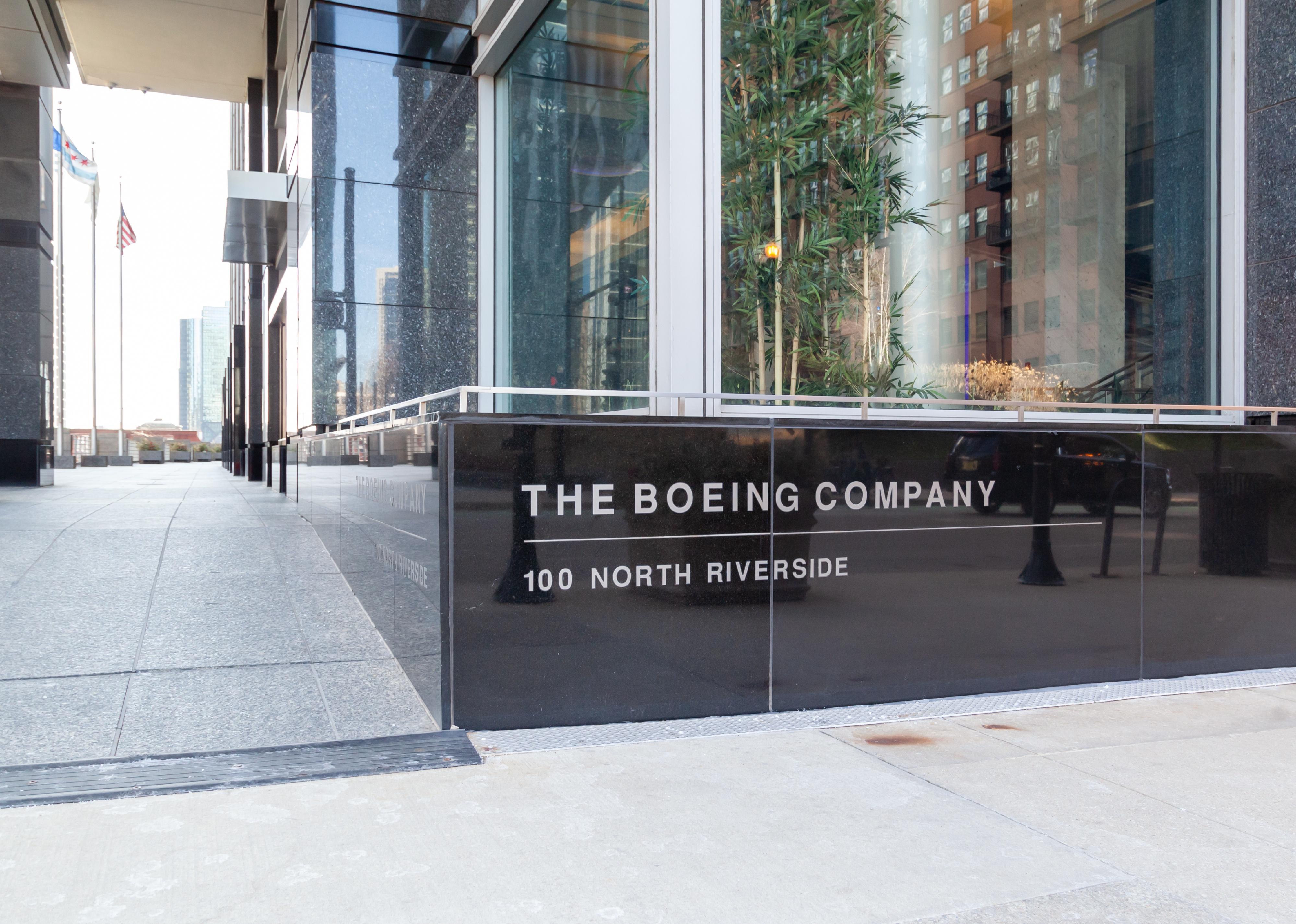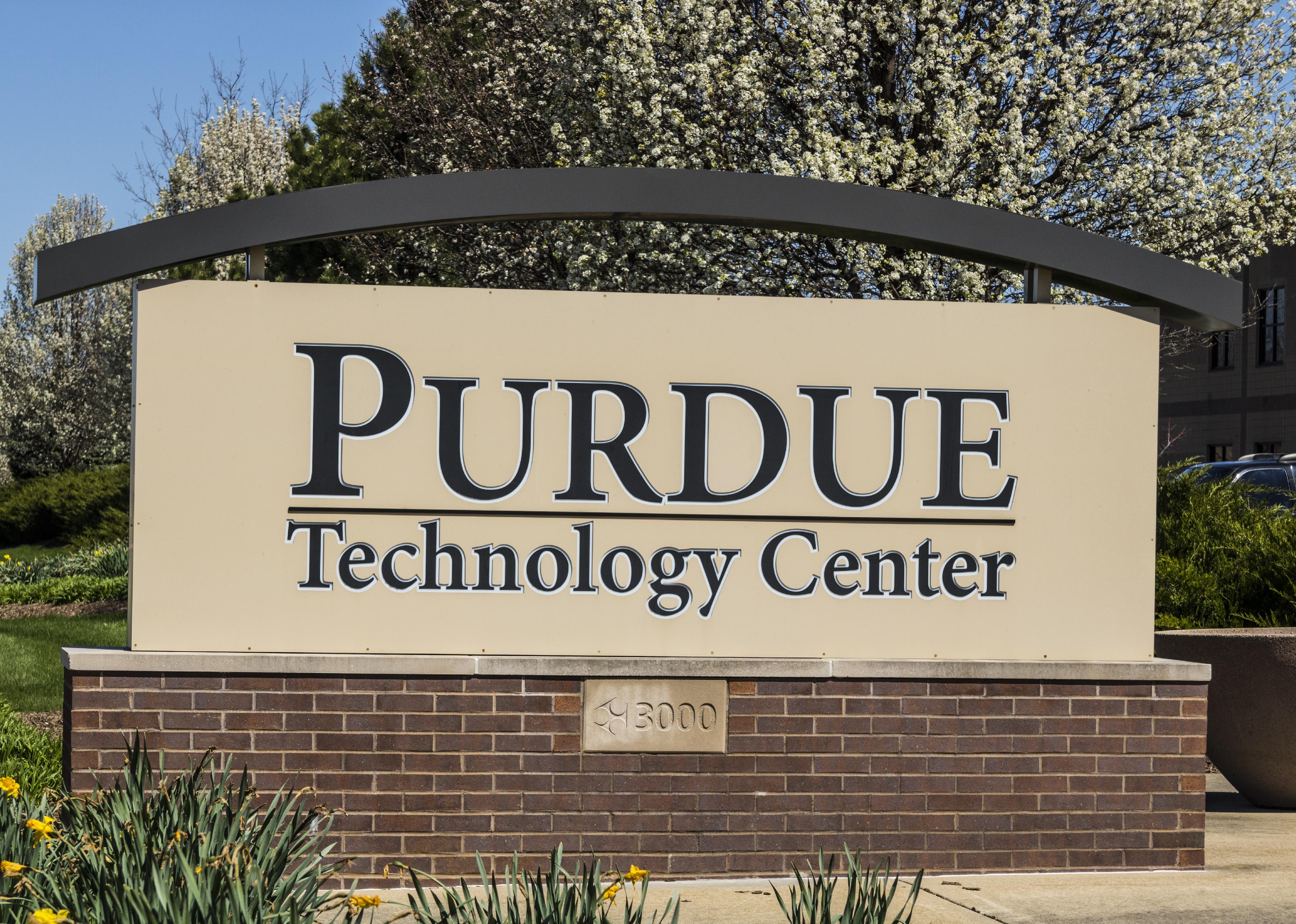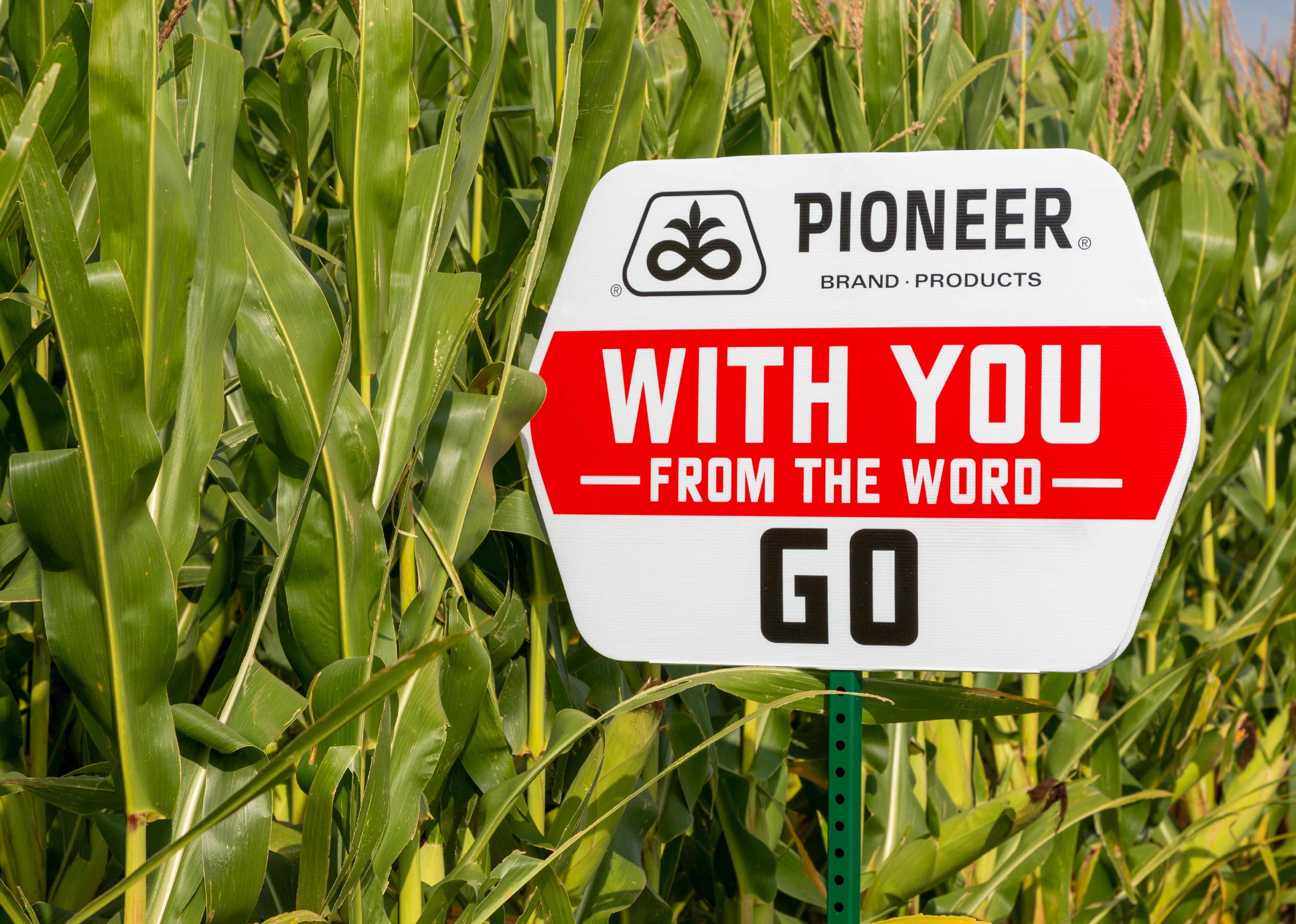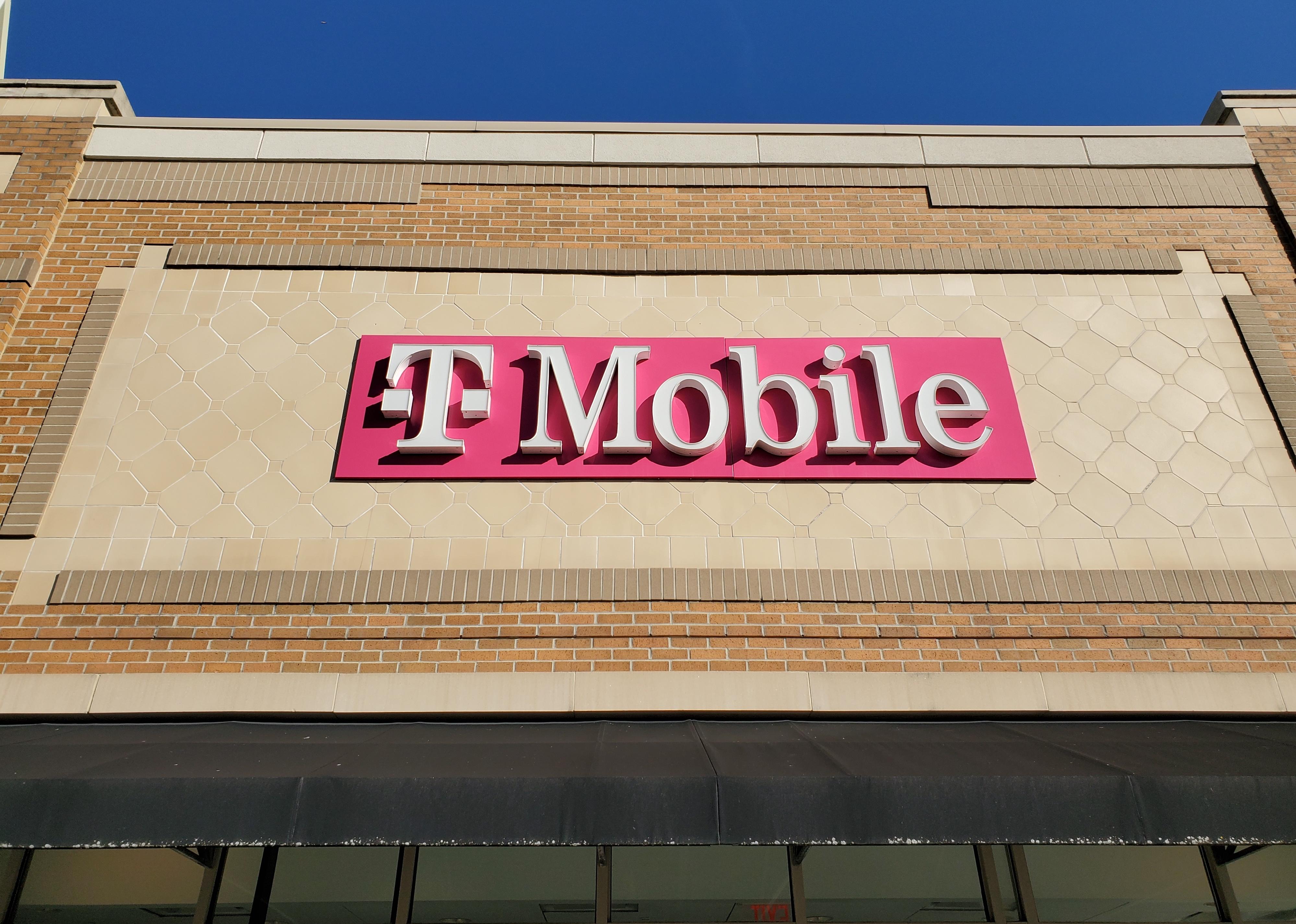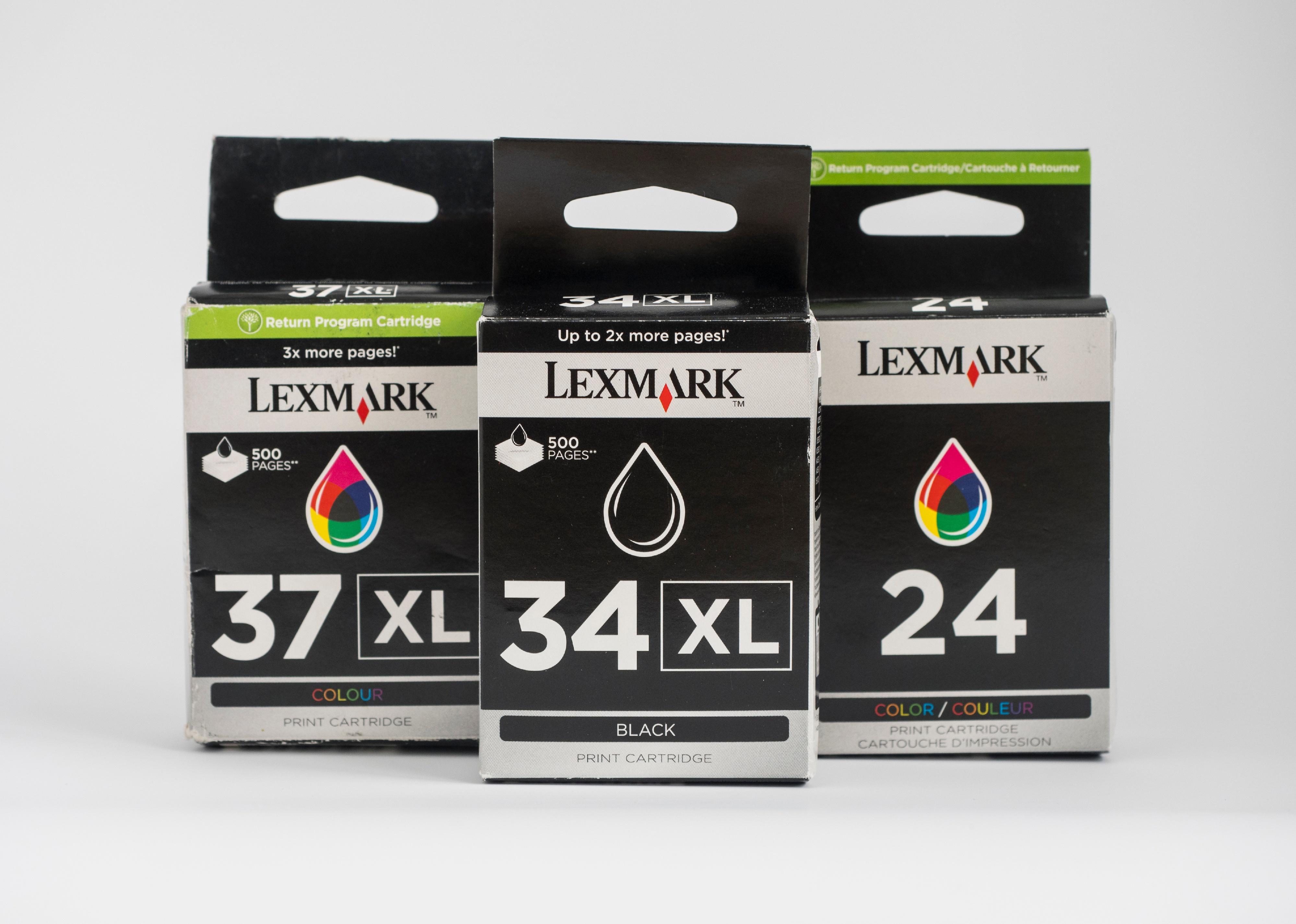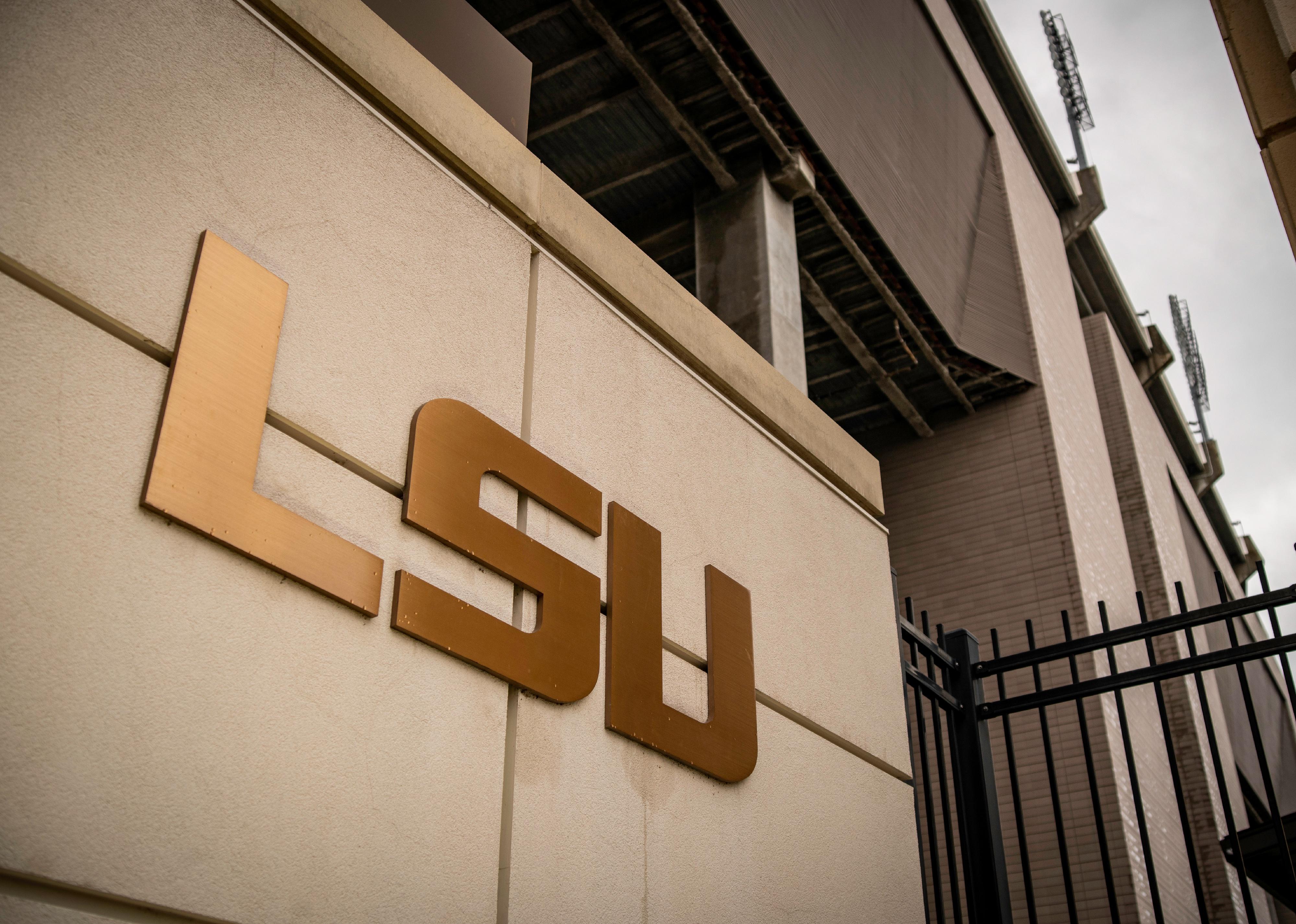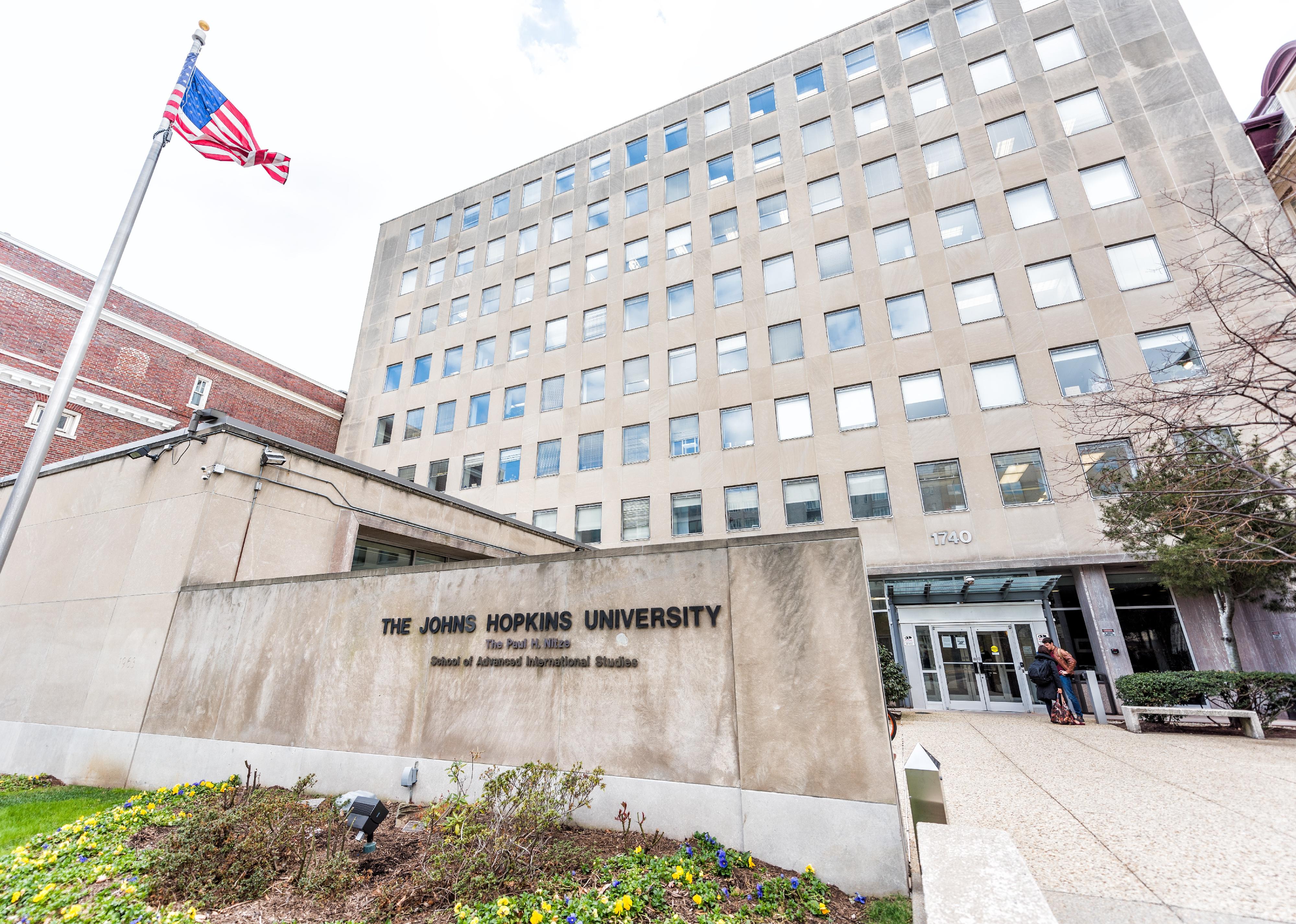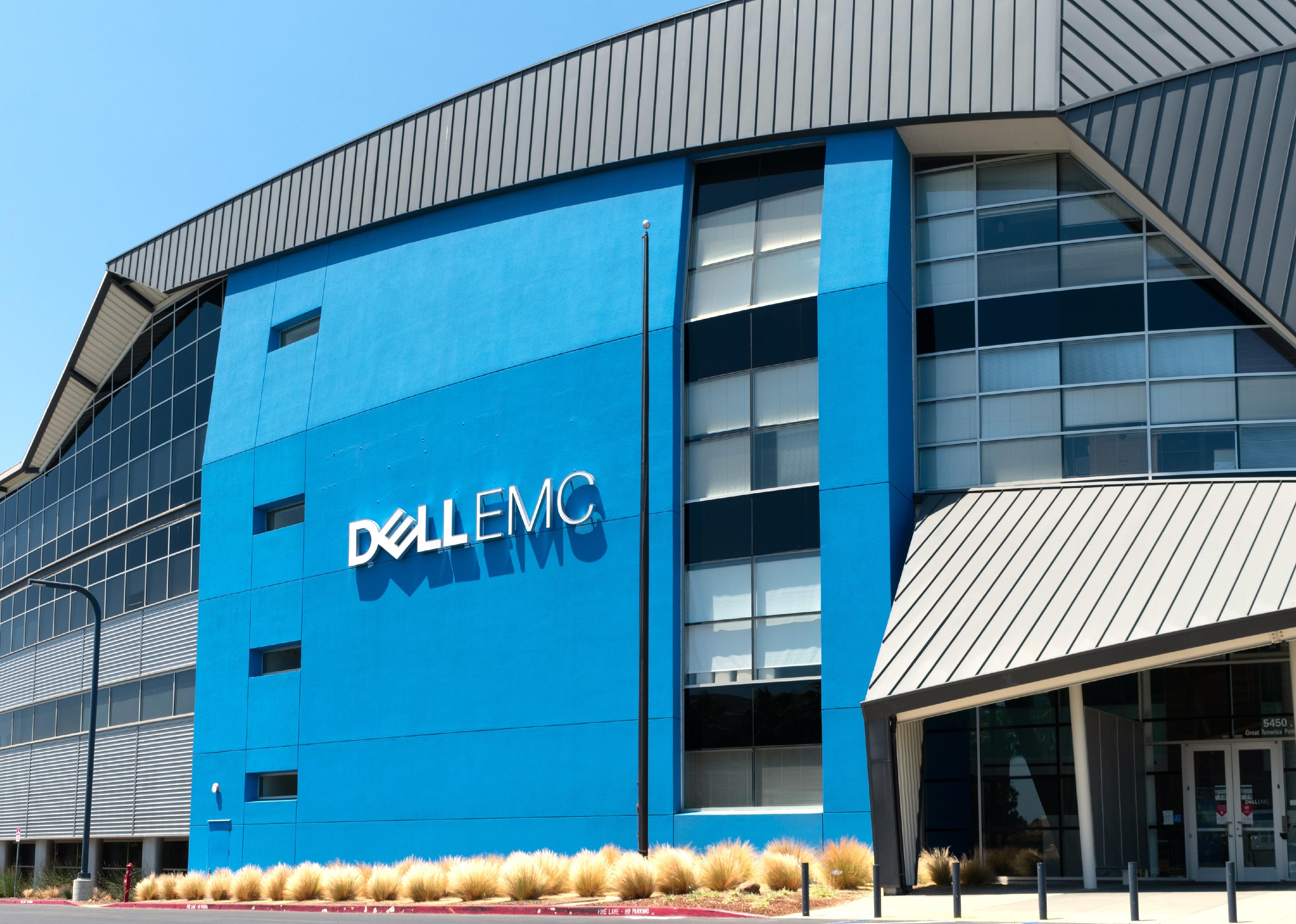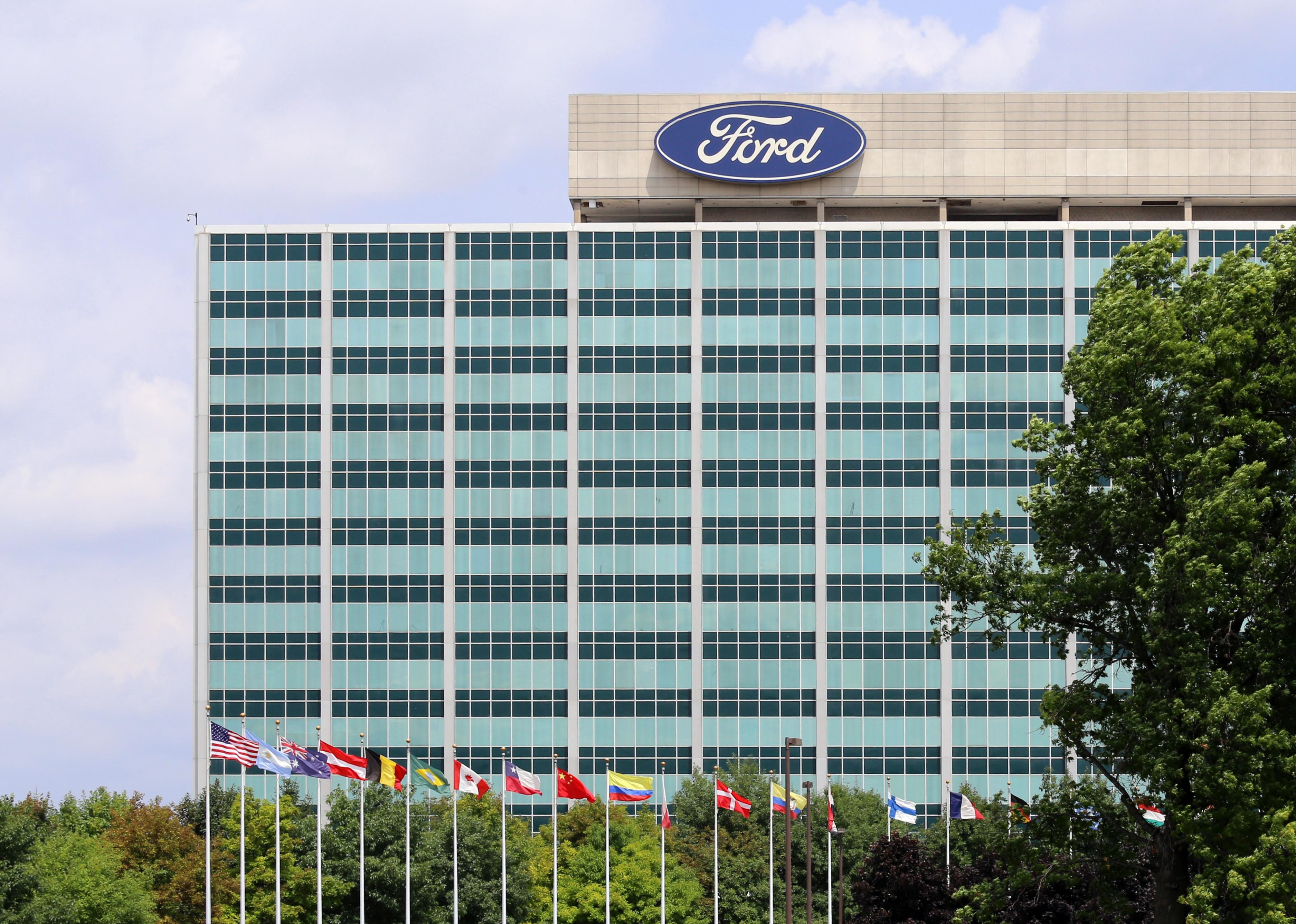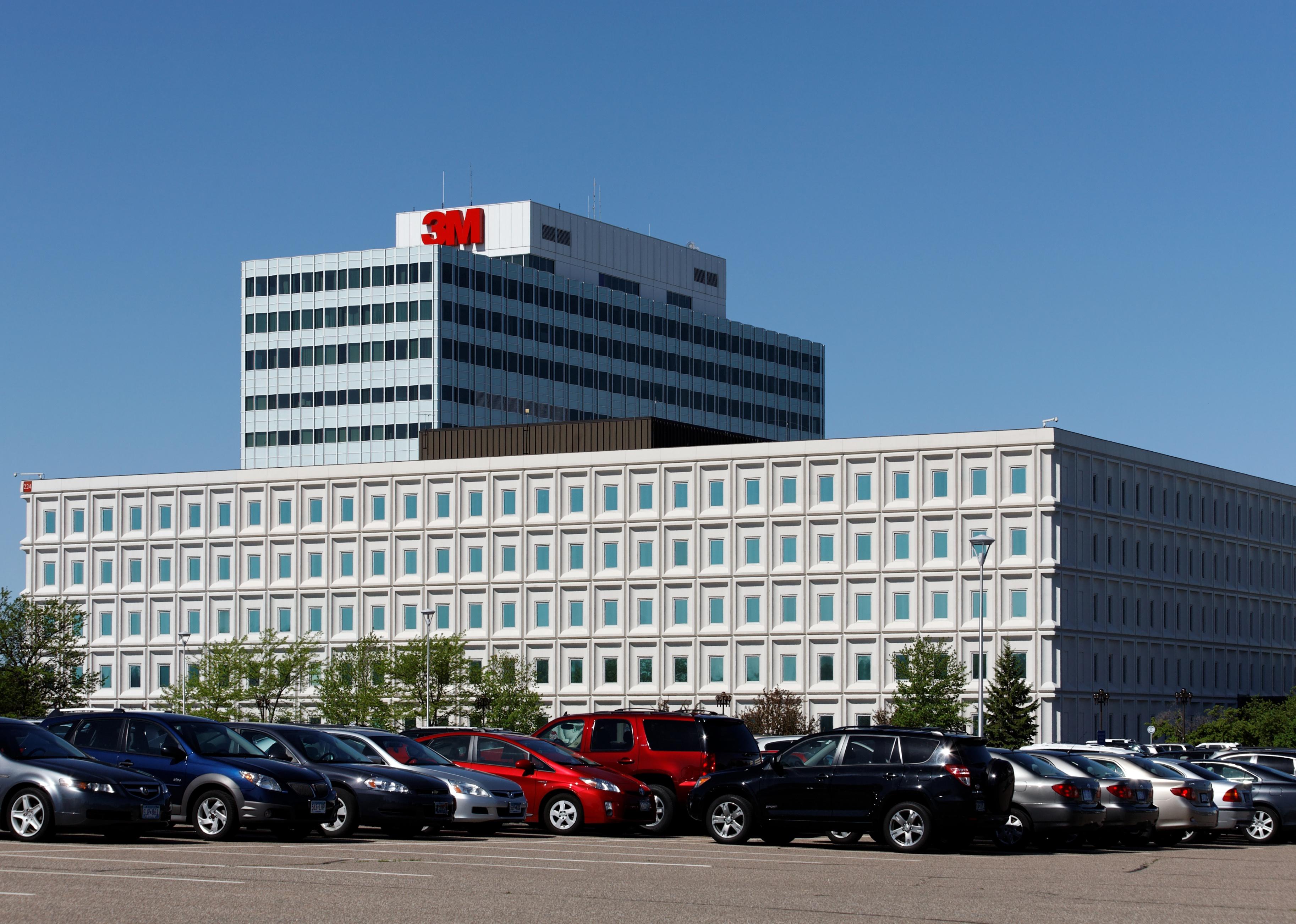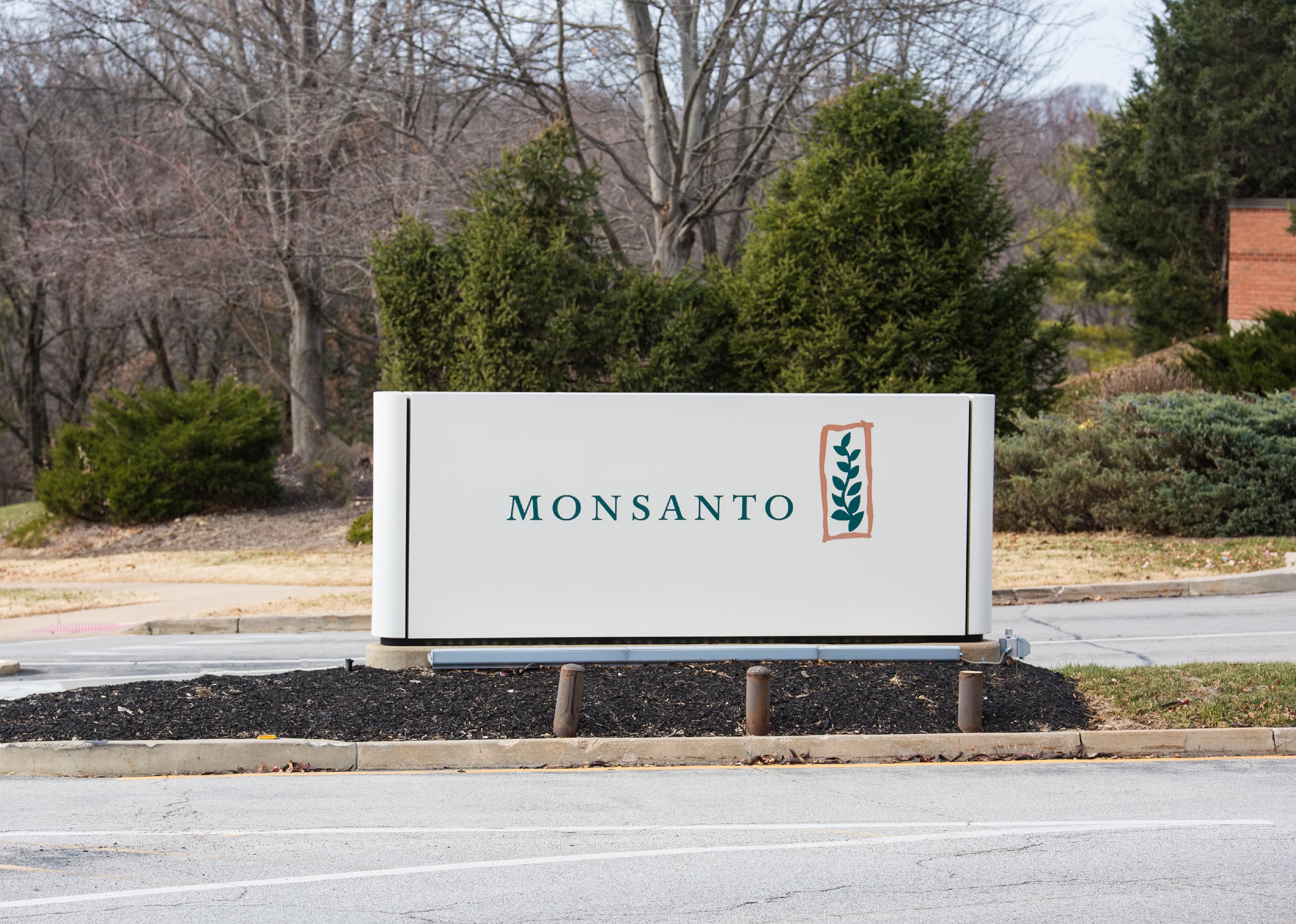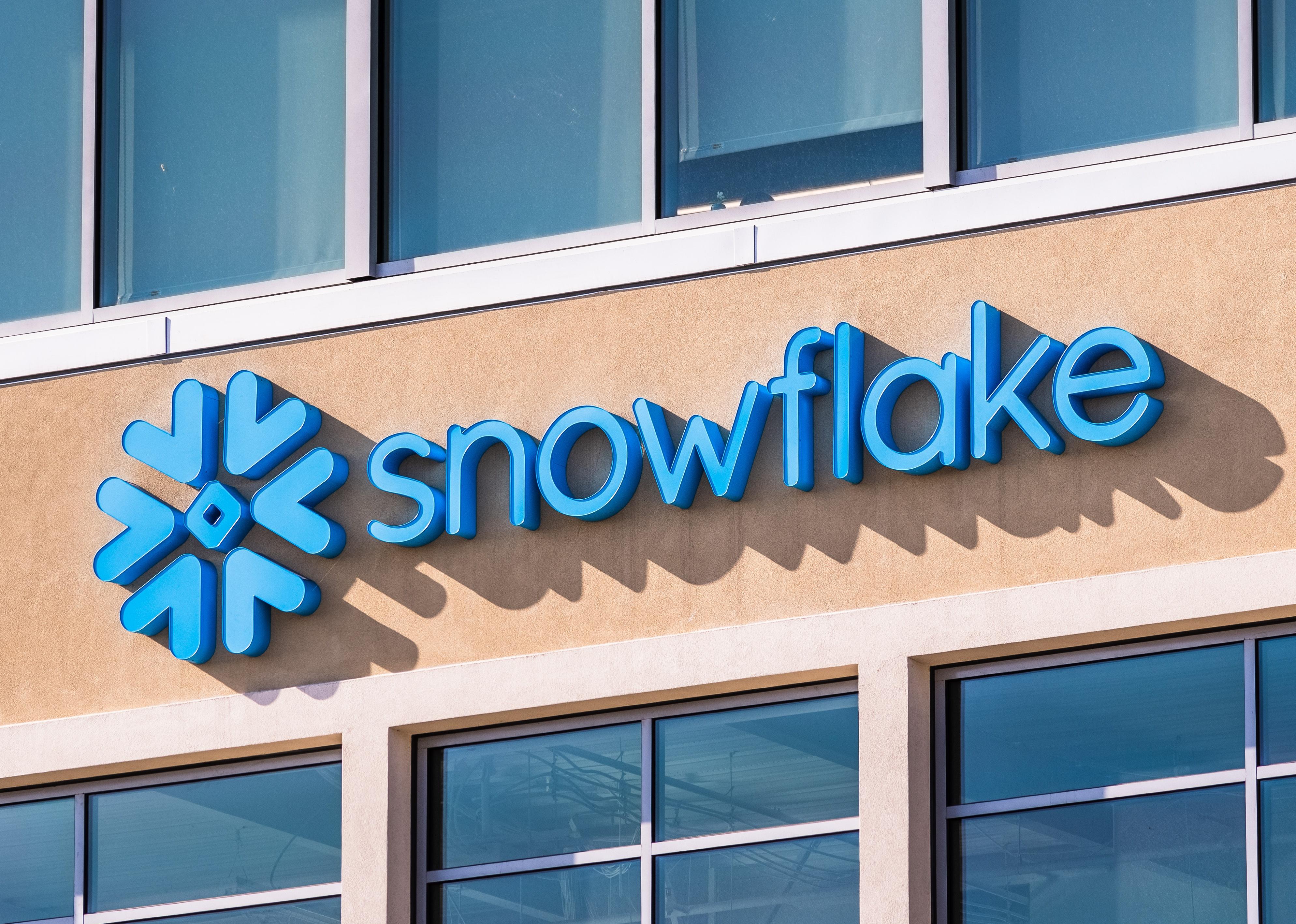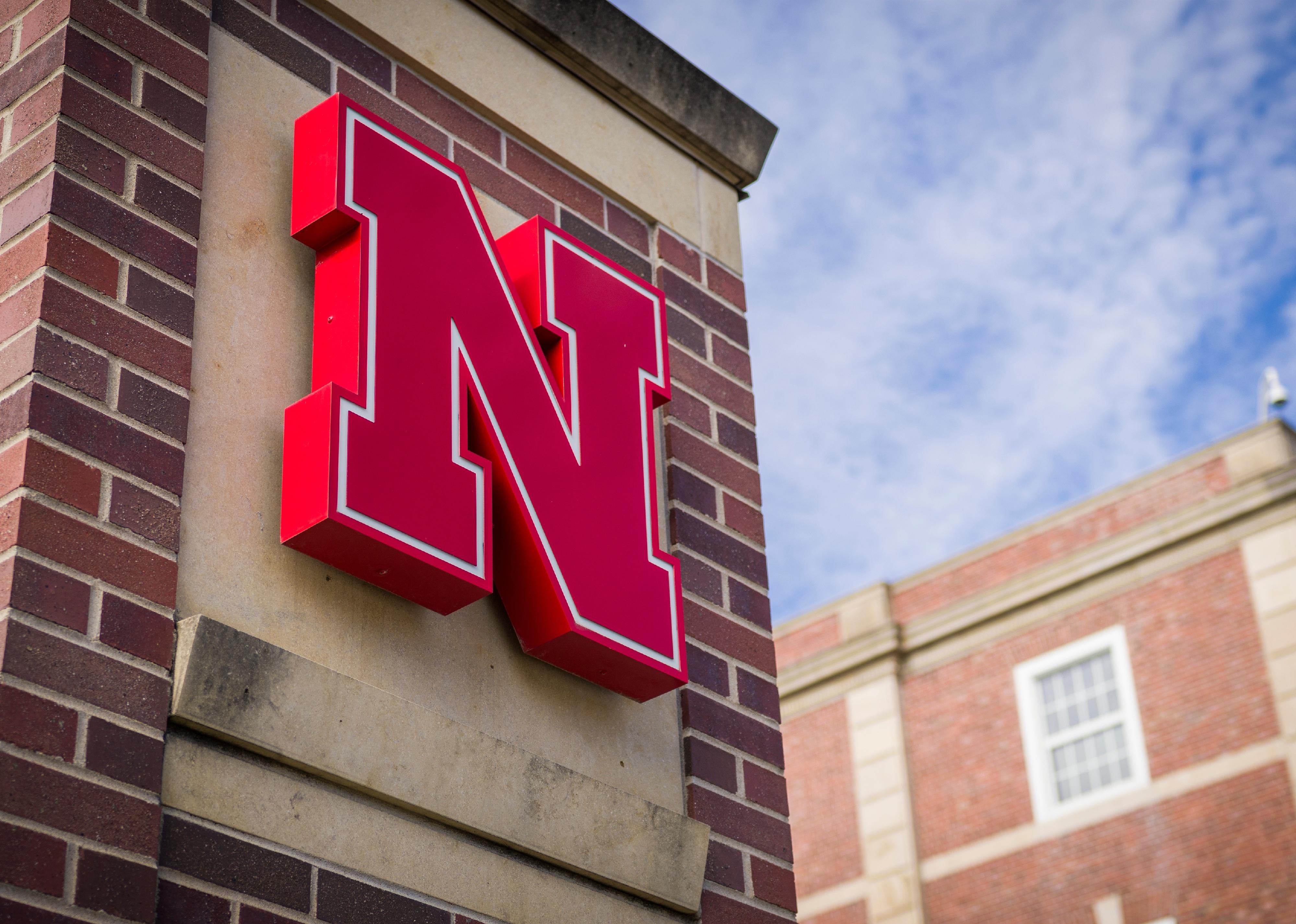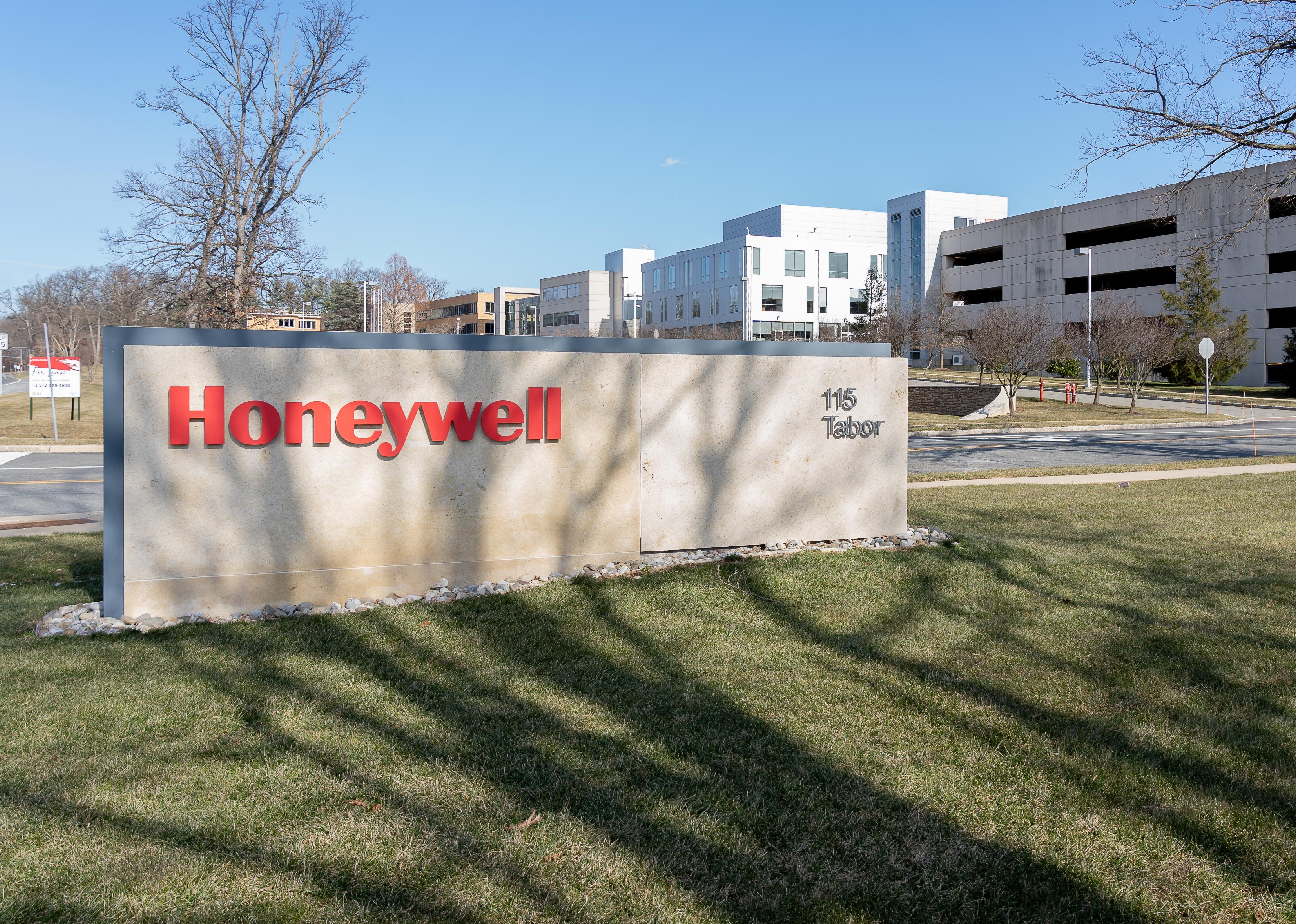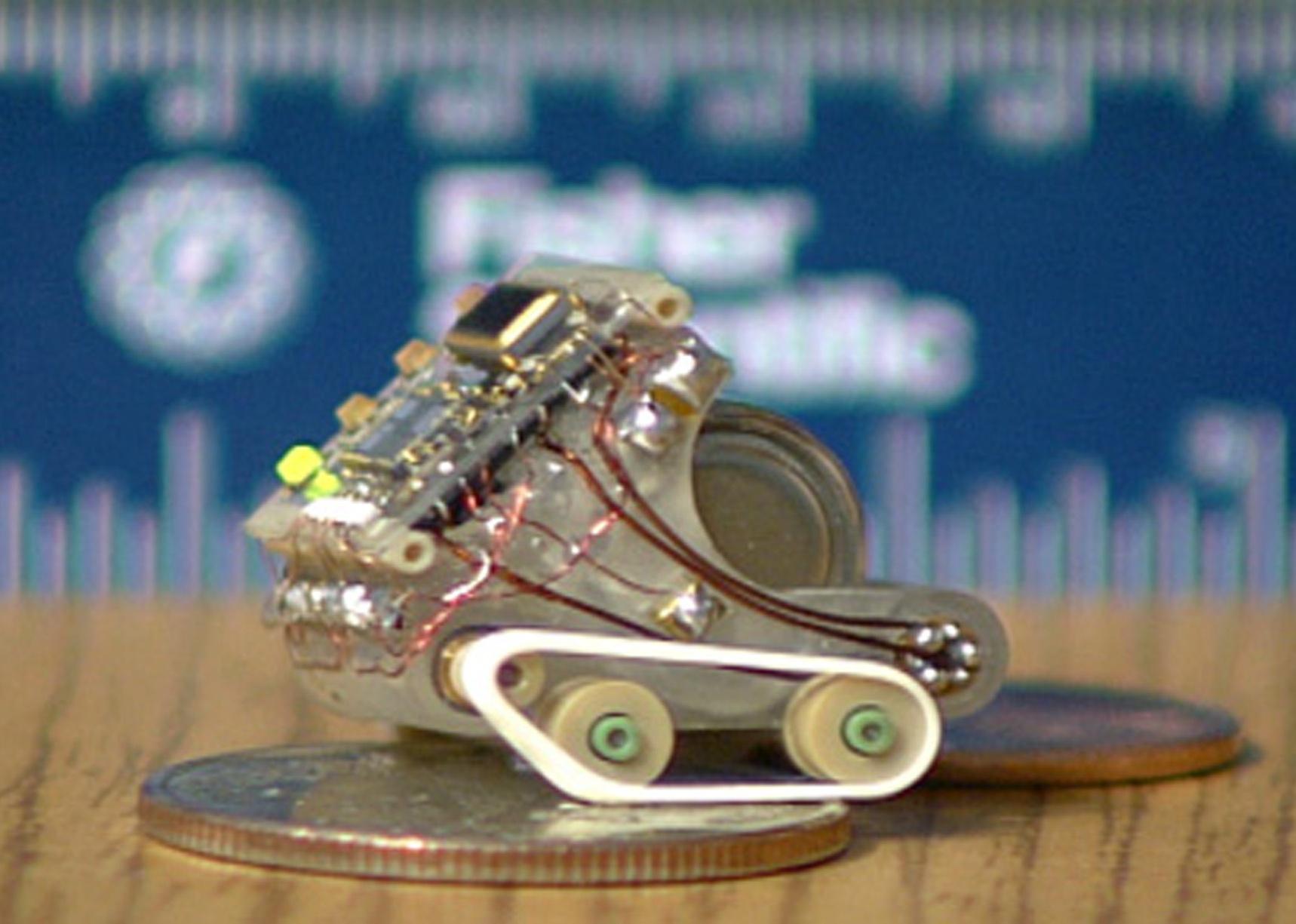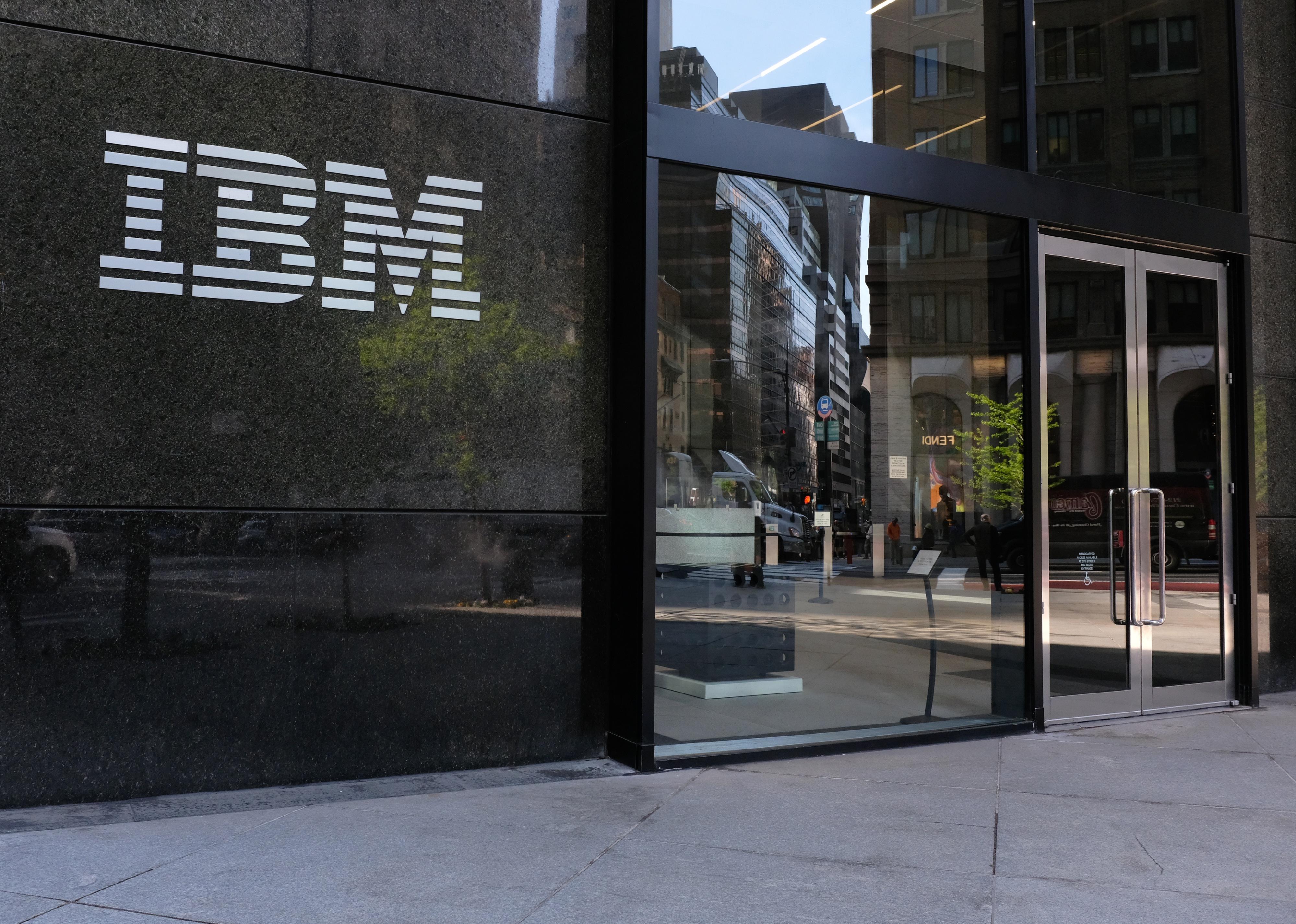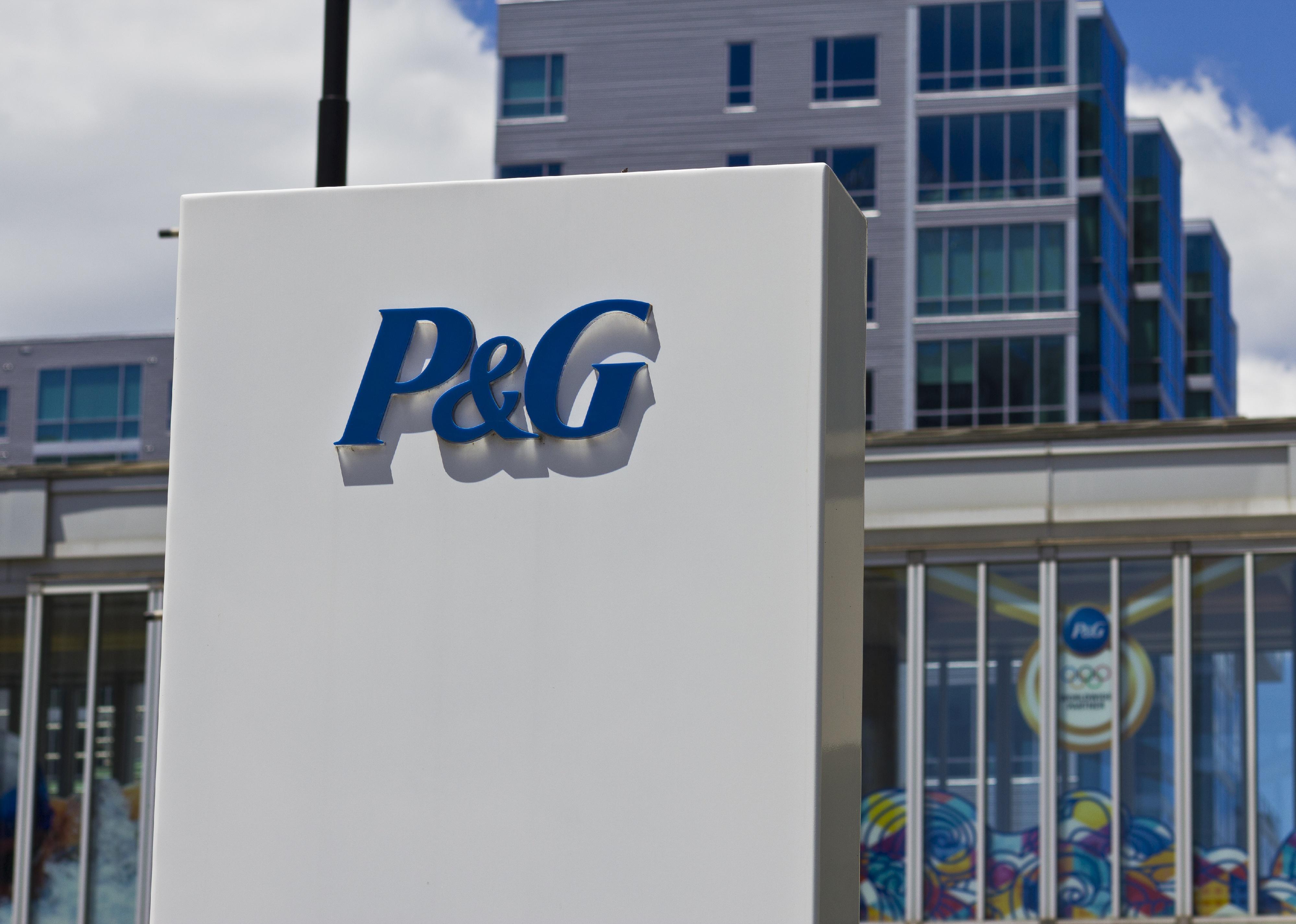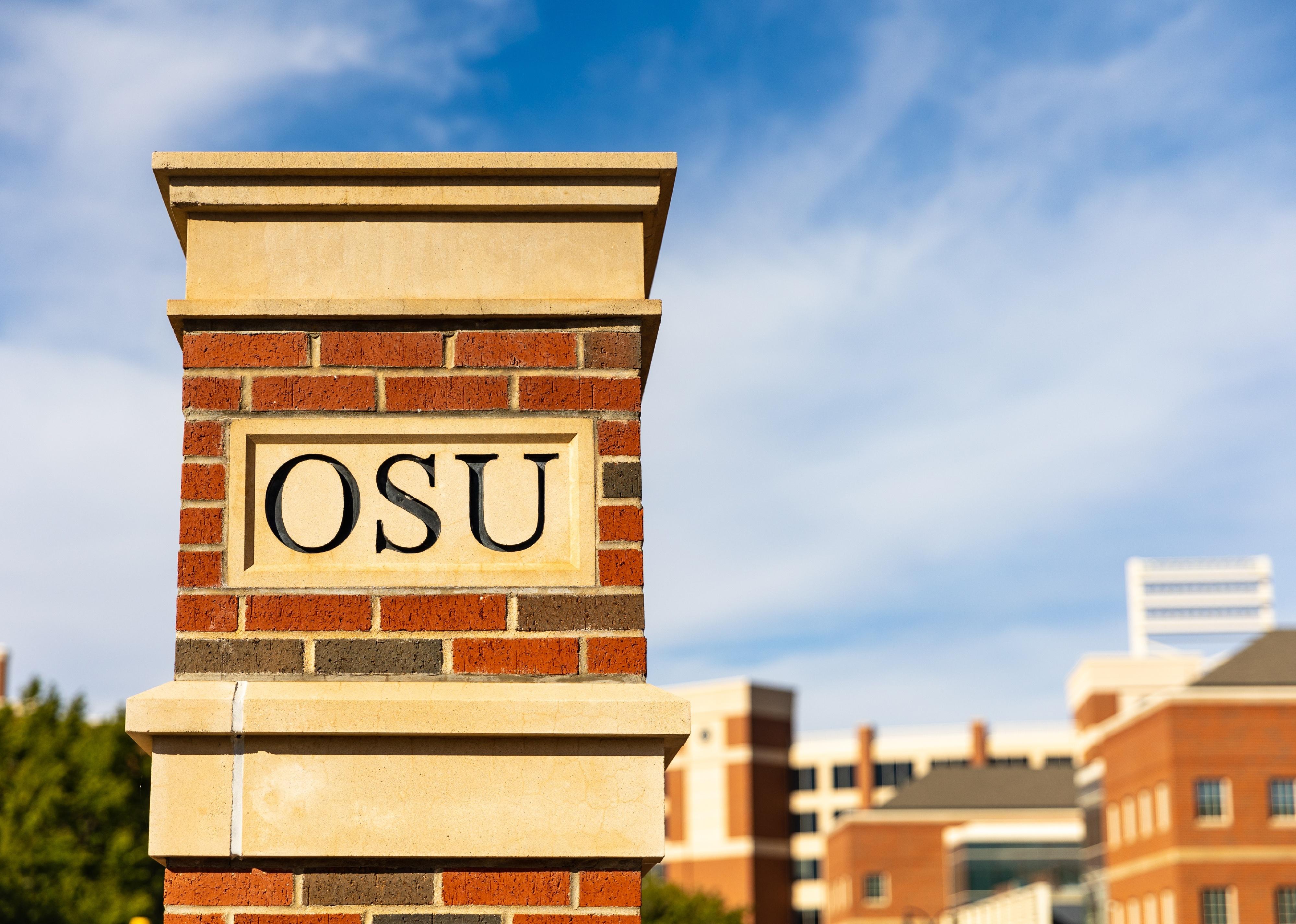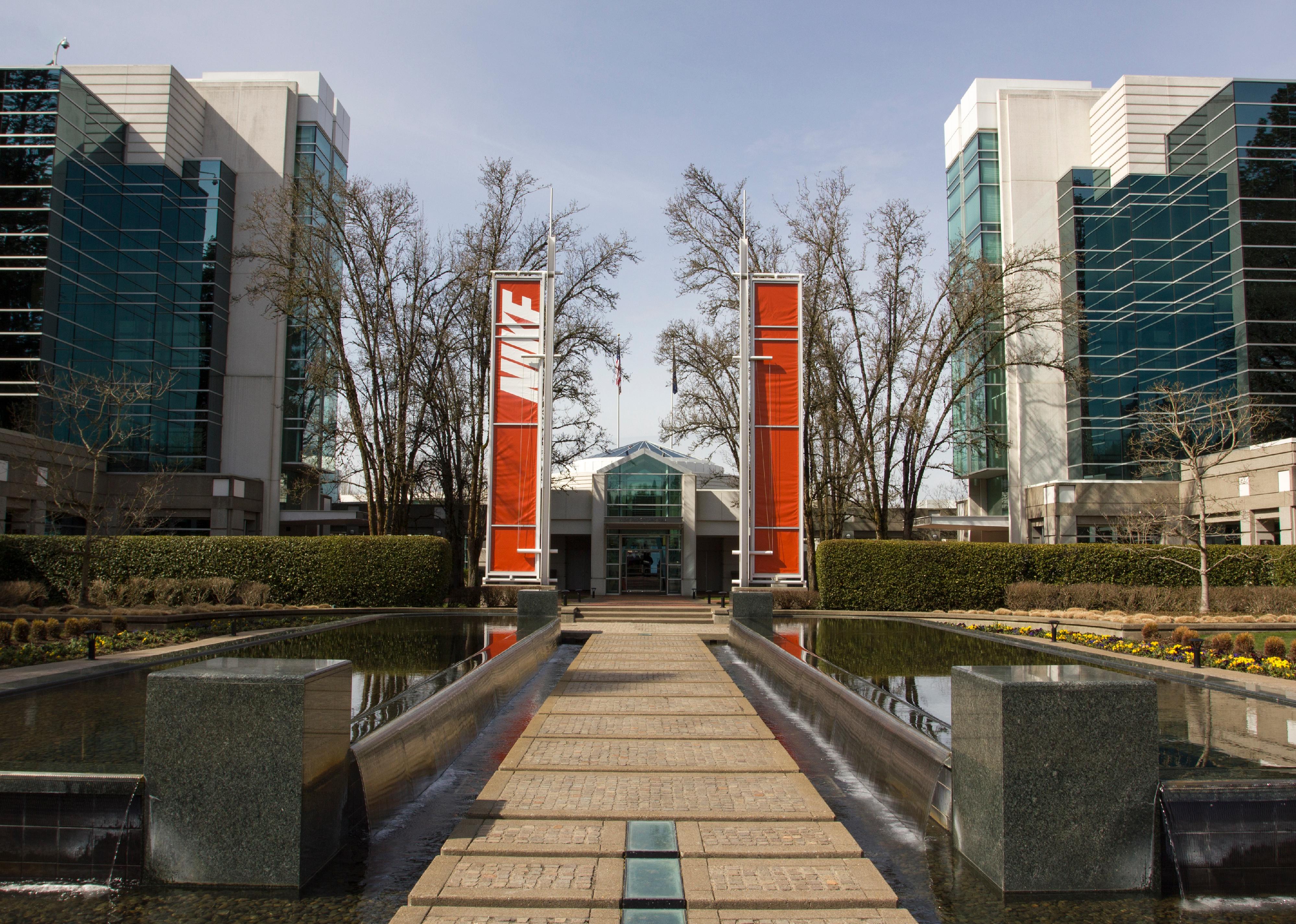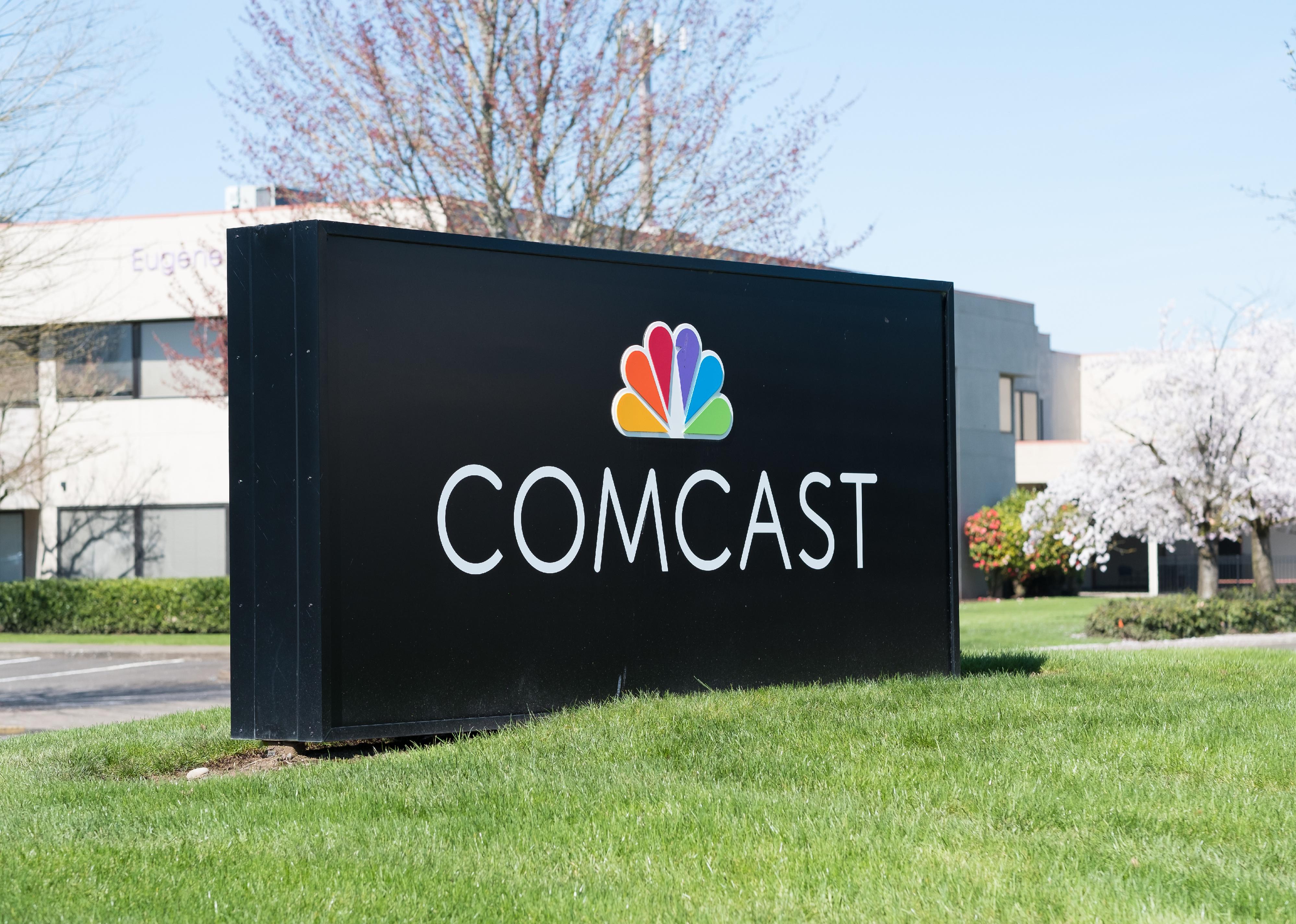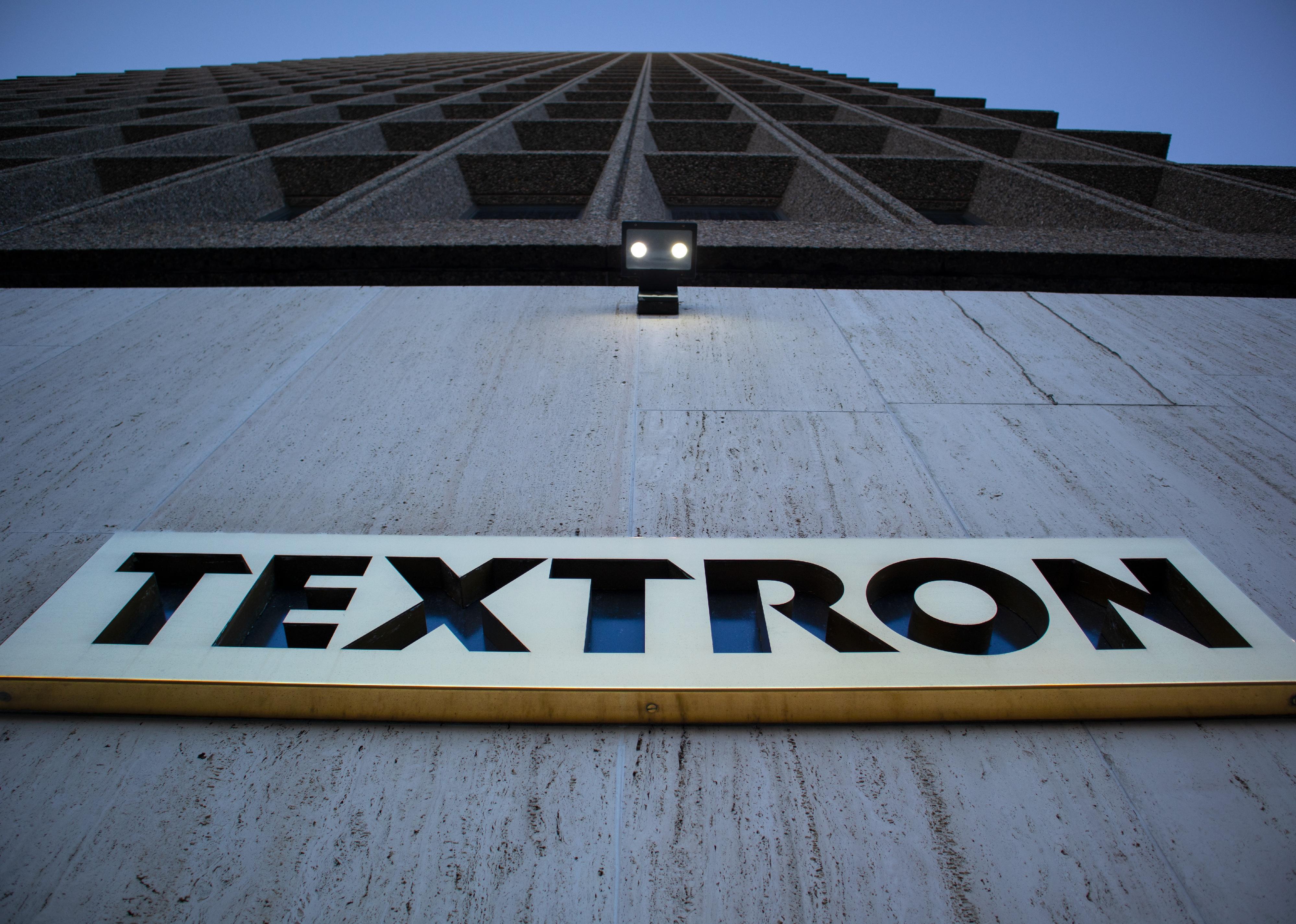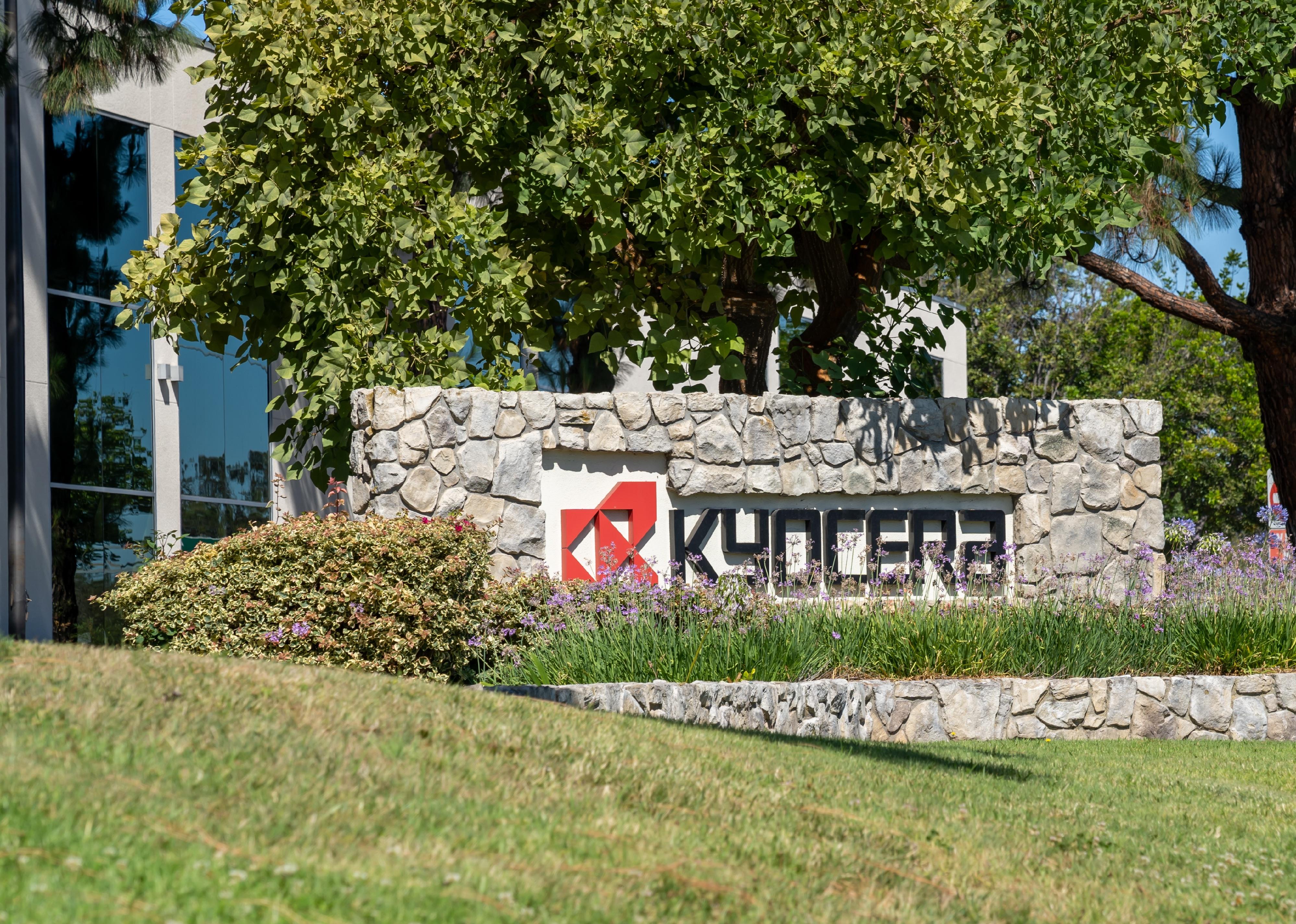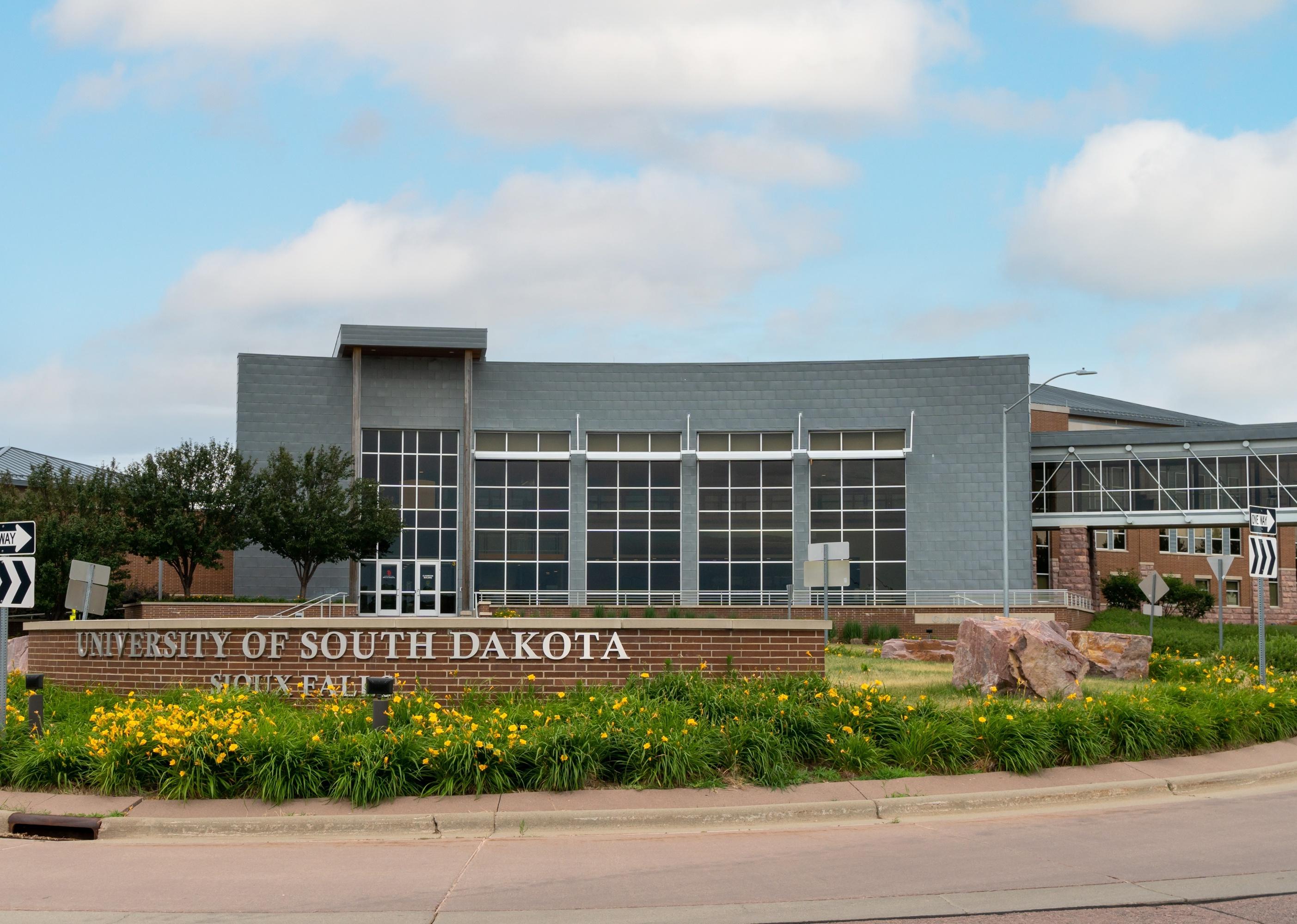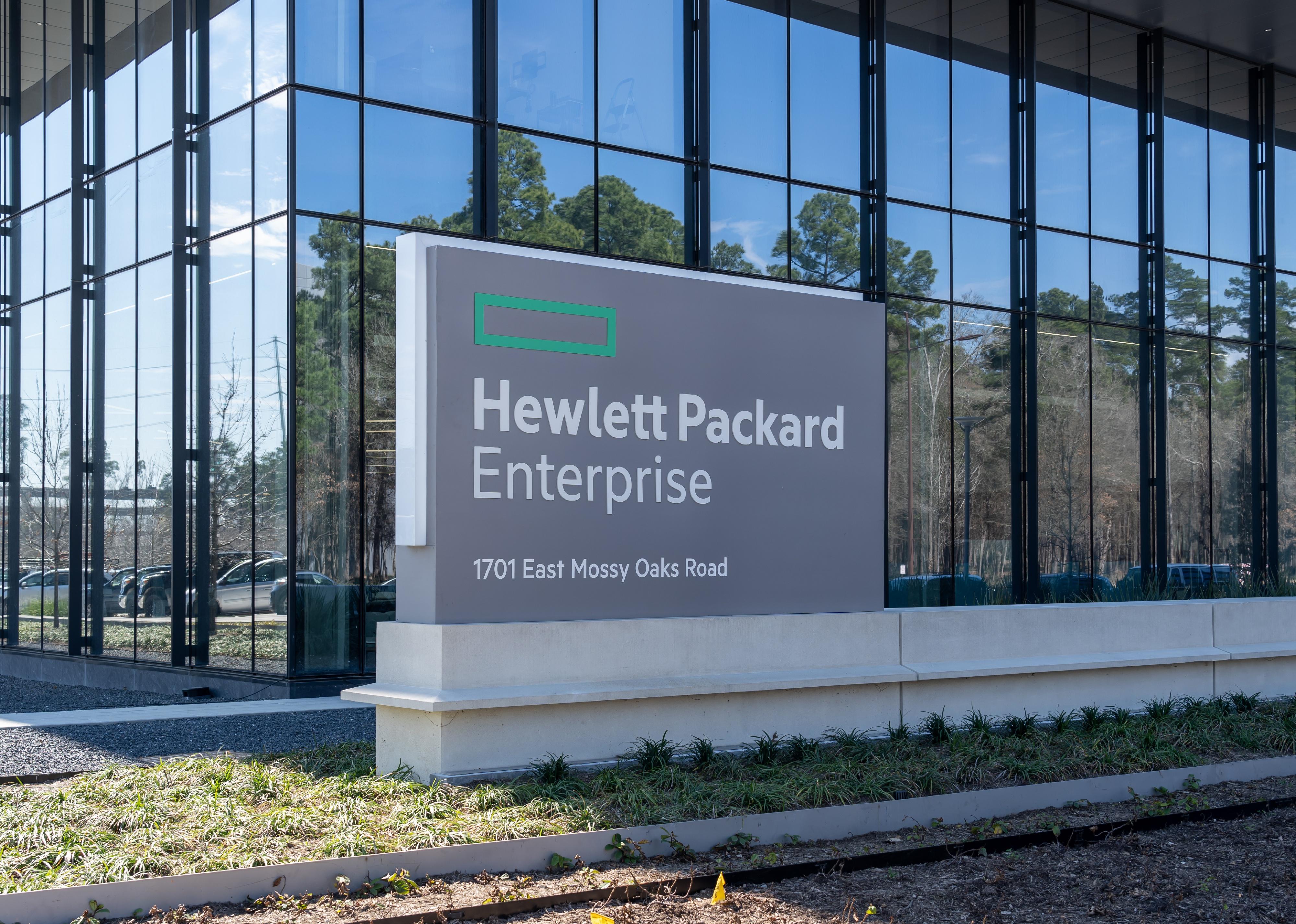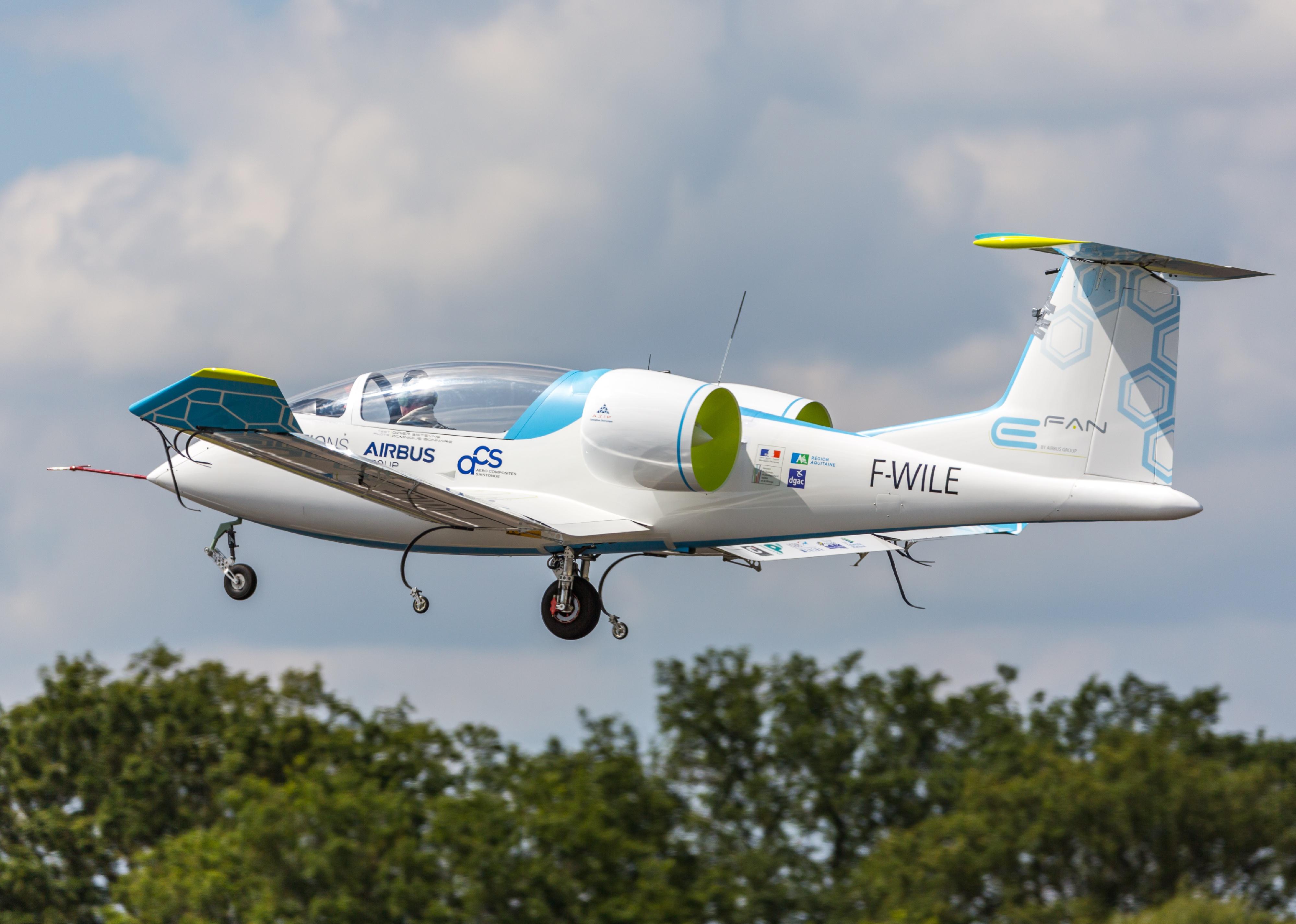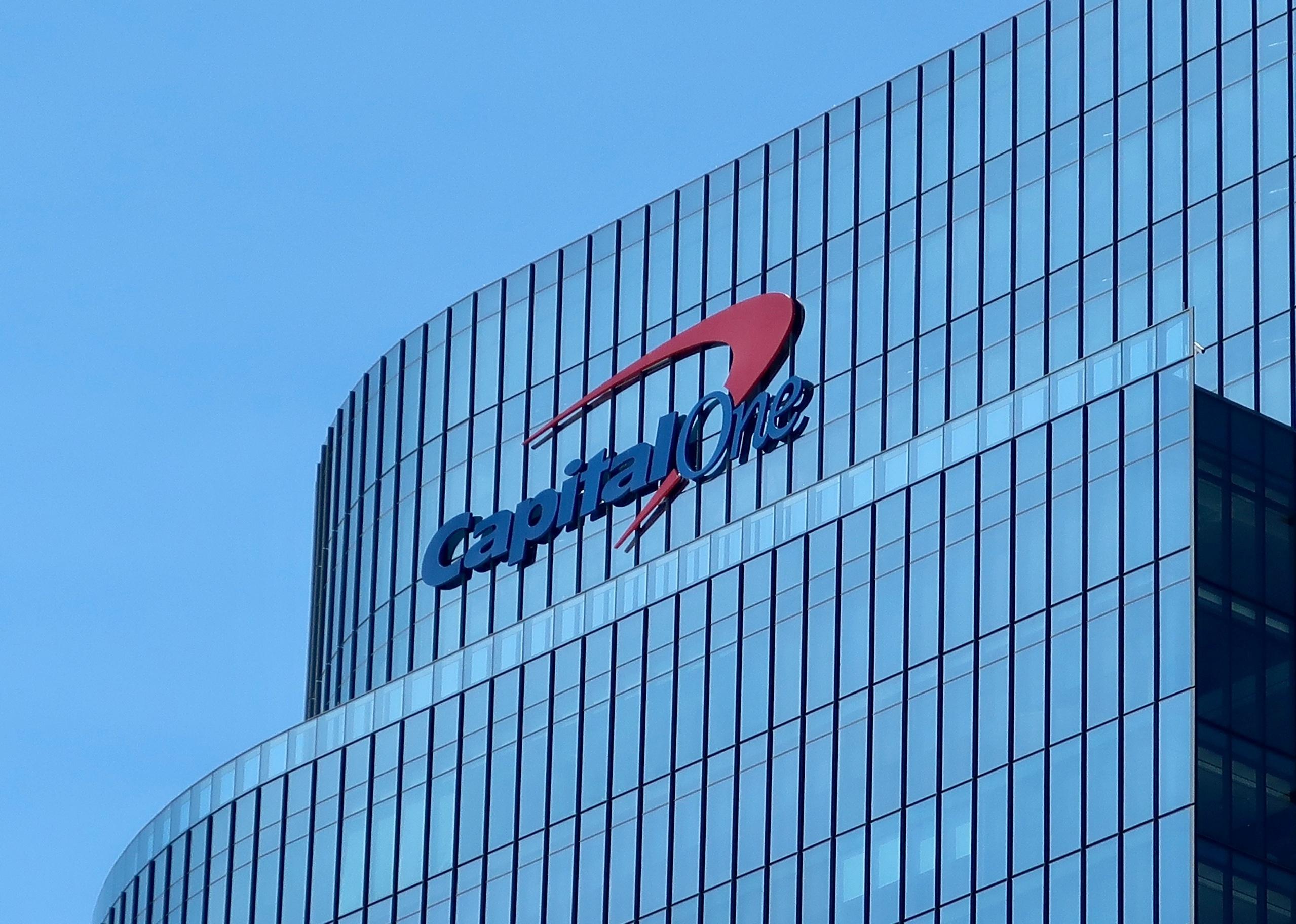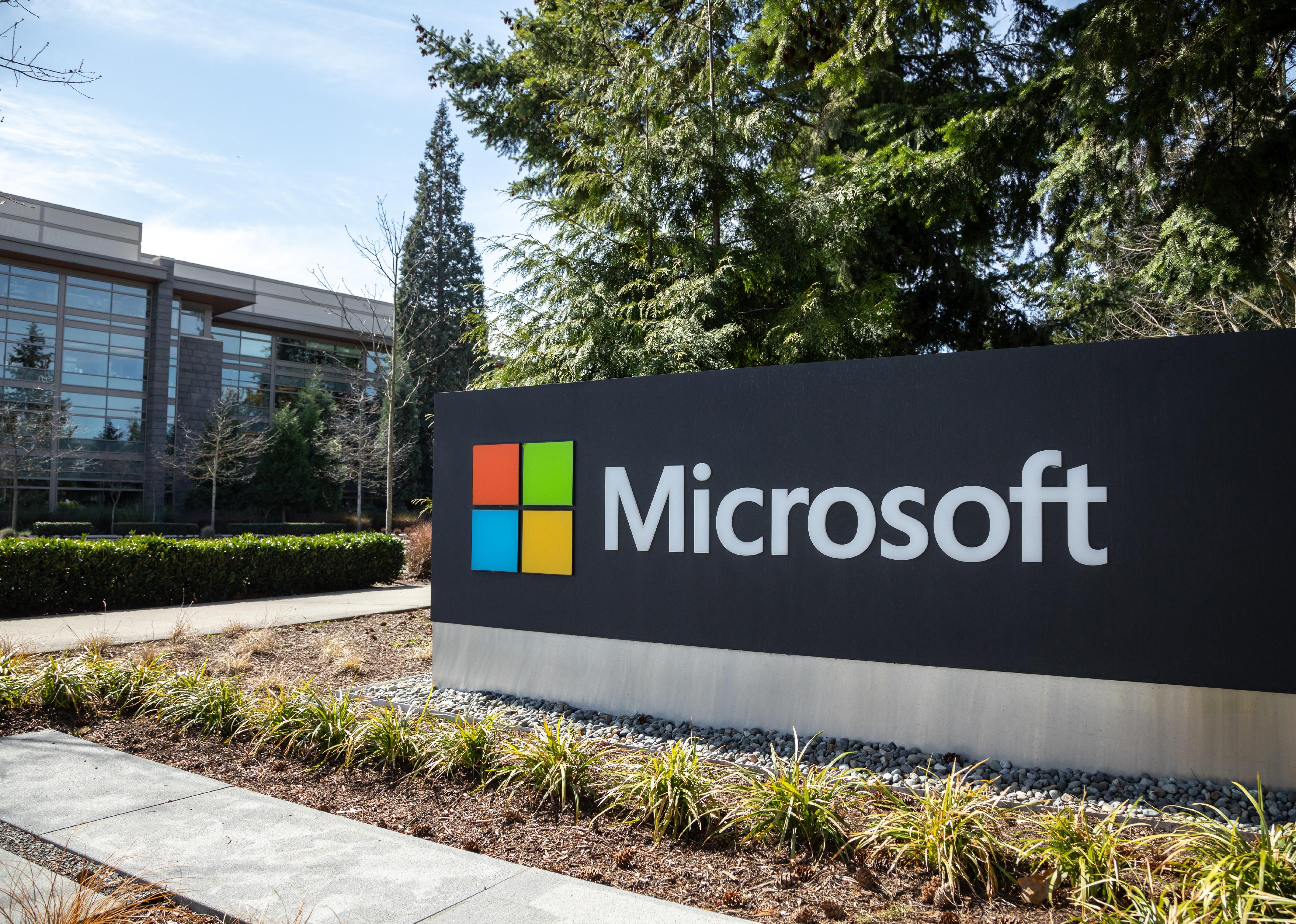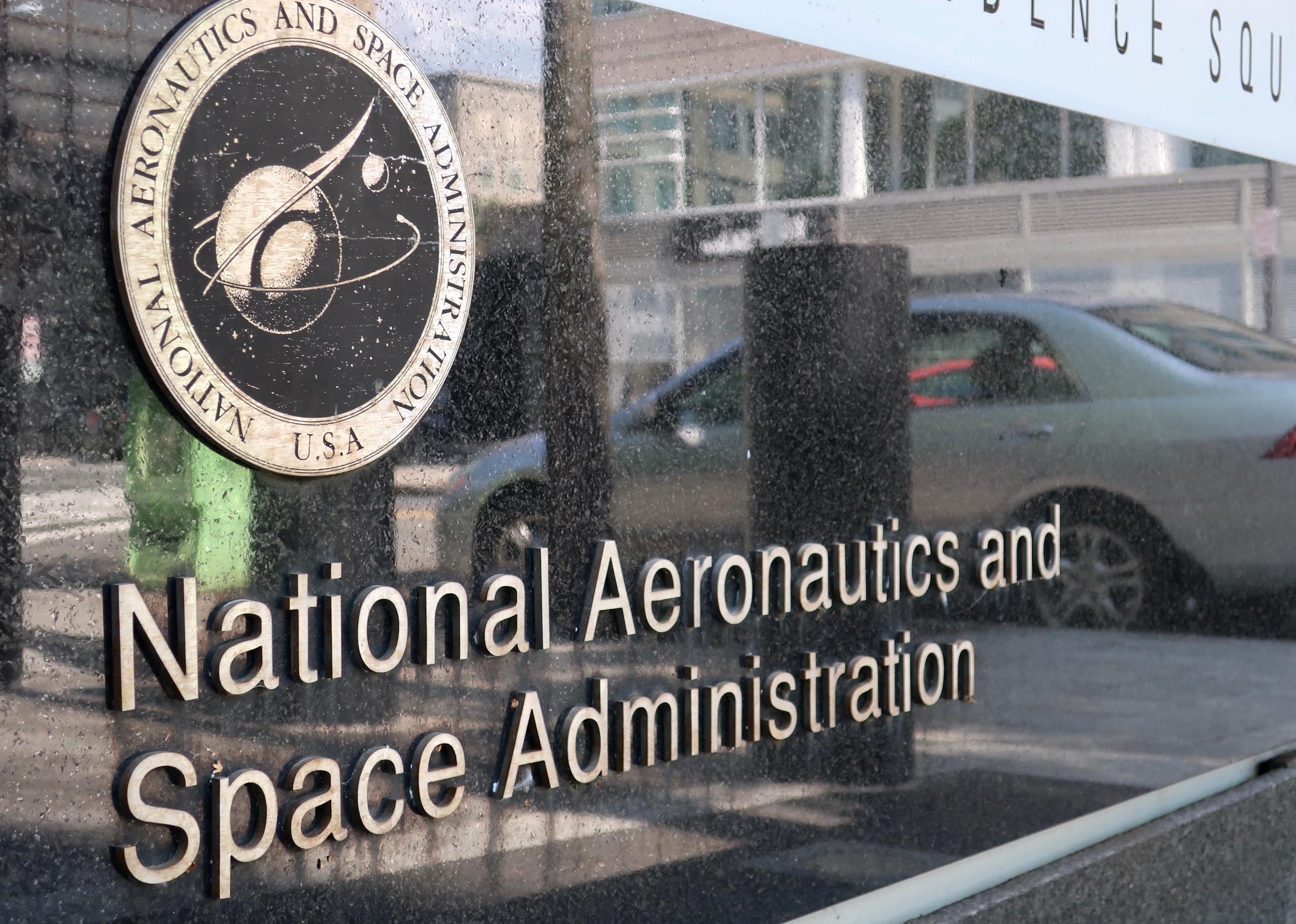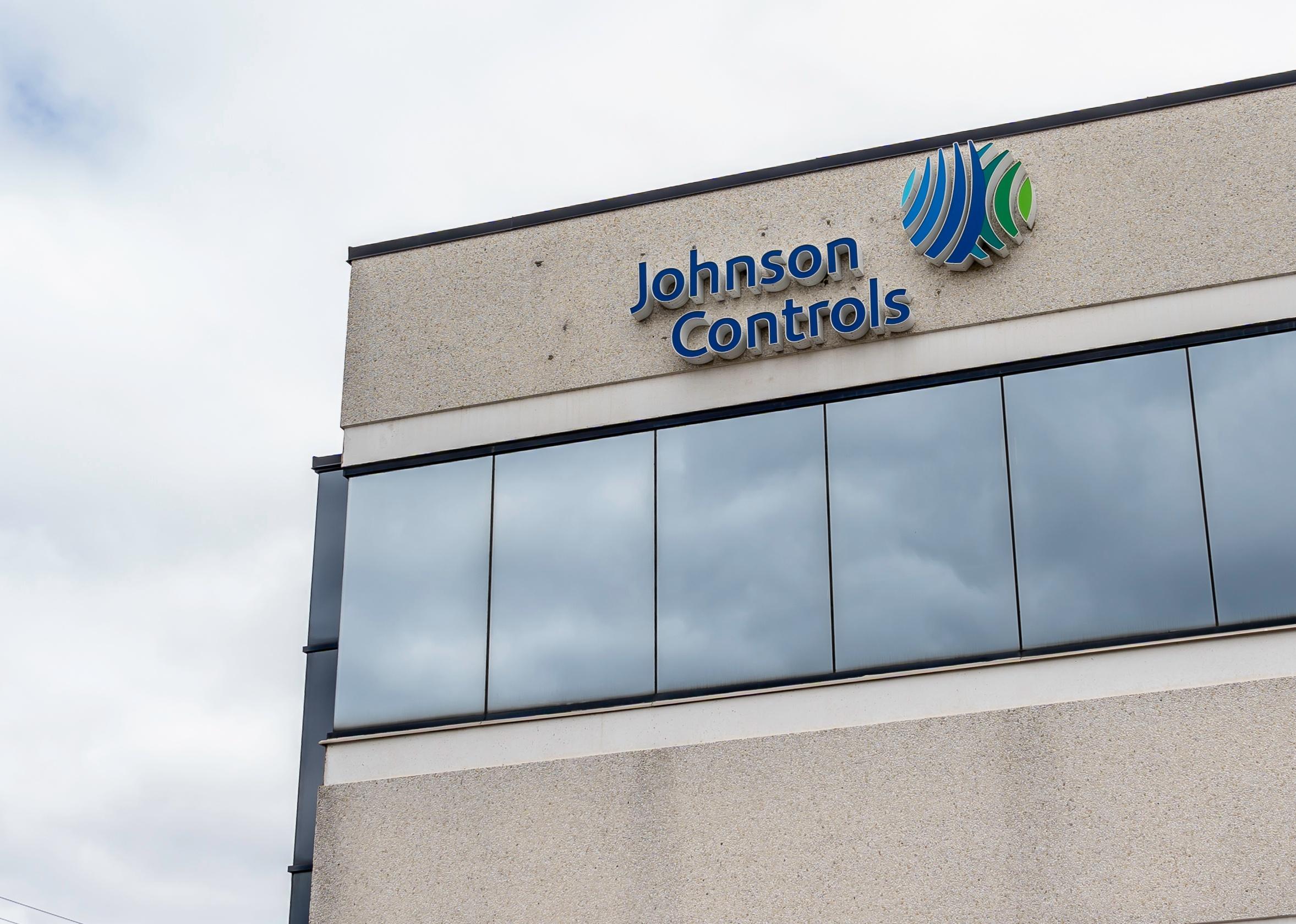Business
The top patent earner in each state last year
Published
11 months agoon
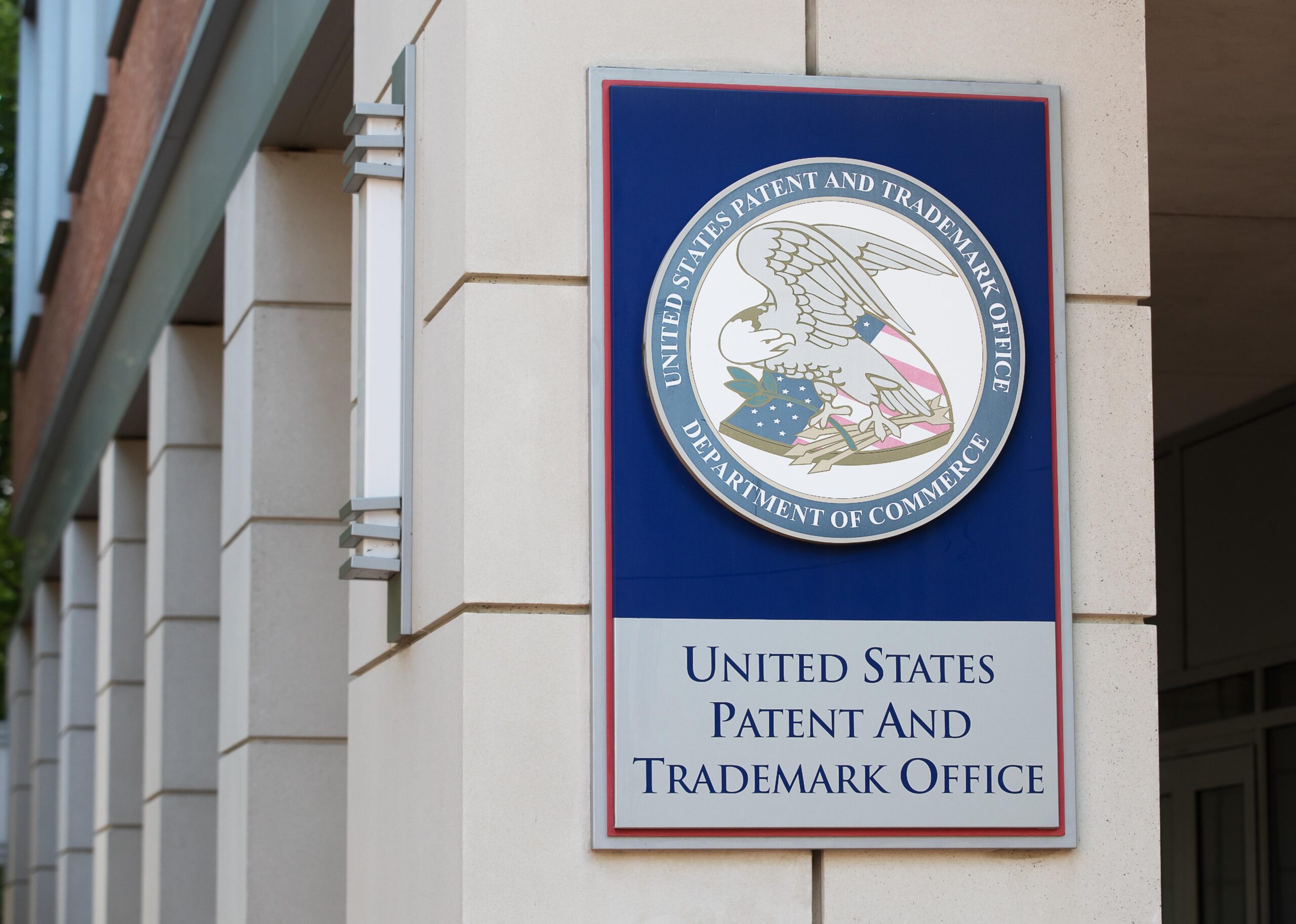
Tech and engineering firms were the most inventive patent winners across the U.S. last year—a year marked by growing tension with foreign nations racing to bring world-changing tech like artificial intelligence and space satellites to market.
Nearly 160,000 patents were assigned across the U.S. in 2022, according to the U.S. Patent and Trademark Office. When a patent is awarded through the USPTO, the individual or company that it’s given to has the license to a temporary monopoly on business for that specific product or service. Companies have used patent law for decades to defend their intellectual property including designs and devices against competitors that might attempt to profit off of stolen ideas.
ClickUp used data from the Patent and Trademark Office to find the top patent earner in each state based on the number of patents assigned in fiscal year 2022, which ran from Oct. 1, 2021, through Sept. 30, 2022, for the patent office.
The data looks at the assignees for both regular utility and design patents and was limited to assignees that received at least 10 patents within the year. There were no assignees that met these criteria in Alaska, Hawaii, Maine, Mississippi, or West Virginia.
Private spending on research and development by U.S. companies has skyrocketed since the economic downturn of the late 2000s. In 2020, it was estimated to total $531 billion, according to the latest available data from the National Center for Science and Engineering Statistics.
In 2022, nine colleges and universities rose to the top in their respective states for patent filing, including the prestigious Johns Hopkins University in Maryland. The vast majority of top patent earners last year were private organizations.
Read on to see who scooped up the rights to the most cutting-edge tech in your state last year.
![]()
University of College // Shutterstock
Alabama
– Top patent earner: The Board of Trustees of the University of Alabama
– Patents issued, 2022: 29 (53.7% of all patents statewide)
– Unique patent assignees statewide, 2022: 3
The University of Alabama earns the majority of patents in the state, according to USPTO data. In 2022 the university patents included technology for a method to convert a traditional lawn mower into an automated one.
Ken Wolter // Shutterstock
Arizona
– Top patent earner: Arizona Board of Regents for and on behalf of Arizona State University
– Patents issued, 2022: 179 (26.7% of all patents statewide)
– Unique patent assignees statewide, 2022: 15
The Arizona Board of Regents earned patents in 2022 for a number of biological and technological breakthroughs, one of which is described as a “skin-like condom” that contains active ingredients for stimulating male and female arousal.
EQRoy // Shutterstock
Arkansas
– Top patent earner: Walmart Apollo LLC
– Patents issued, 2022: 169 (93.9% of all patents statewide)
– Unique patent assignees statewide, 2022: 2
Bentonville-headquartered Walmart operates an intellectual property-focused LLC called Walmart Apollo, which has sued competitors in the past, including Kanye West, to protect Walmart property. In 2022 it earned patents centering around automated warehouse management and machine learning.
Tada Images // Shutterstock
California
– Top patent earner: Qualcomm Technologies Inc.
– Patents issued, 2022: 2267 (10.1% of all patents statewide)
– Unique patent assignees statewide, 2022: 299
Qualcomm earned patents in 2022 for technology that could recognize activities taking place in videos, and for annotating images of hands to better train machine learning algorithms. Early artificial intelligence models are notoriously inept at visualizing hands.
Around the World Photos // Shutterstock
Colorado
– Top patent earner: Dish Network Corp.
– Patents issued, 2022: 106 (15.3% of all patents statewide)
– Unique patent assignees statewide, 2022: 28
Dish Network Corp. earned patents in 2022 for technologies to automate parts of the video editing process and methods for using voice to control media devices.
Arnold O. A. Pinto // Shutterstock
Connecticut
– Top patent earner: Raytheon Technologies Corp.
– Patents issued, 2022: 379 (35.2% of all patents statewide)
– Unique patent assignees statewide, 2022: 23
Defense contractor Raytheon has earned patents for manufacturing aircraft parts including engines as well as onboard vehicle data systems. The contractor designs and builds aircraft and aerospace equipment for commercial and military use.
Scharfsinn // Shutterstock
Delaware
– Top patent earner: Blue Leaf
– Patents issued, 2022: 258 (29.9% of all patents statewide)
– Unique patent assignees statewide, 2022: 18
Agricultural equipment manufacturer CNH Industrial America was granted a number of patents by the USPTO in 2022 which it transferred to a firm named Blue Leaf I.P. These patents include tech for augers, balers, and other agricultural machinery.
David Becker // Getty Images
Florida
– Top patent earner: Magic Leap Inc.
– Patents issued, 2022: 275 (21.5% of all patents statewide)
– Unique patent assignees statewide, 2022: 31
Founded in 2010, Magic Leap is a company developing augmented reality technology, which overlays digital content onto the real world. In 2022 it earned patents for mixed reality systems that can display 3D content in real-time.
JHVEPhoto // Shutterstock
Georgia
– Top patent earner: AT&T
– Patents issued, 2022: 527 (37.3% of all patents statewide)
– Unique patent assignees statewide, 2022: 29
Telecom giant AT&T is one of the most prolific patent earners in the nation. It earned patents in 2022 for edge computing and for automated assistants that are capable of delegating tasks dictated by the user.
Charles Knowles // Shutterstock
Idaho
– Top patent earner: Micron Technology Inc.
– Patents issued, 2022: 1097 (97.6% of all patents statewide)
– Unique patent assignees statewide, 2022: 3
Micron was issued patents at a rate of more than three per day in 2022. They include patents for technologies connected to semiconductor chips and other computer processing devices.
JHVEPhoto // Shutterstock
Illinois
– Top patent earner: The Boeing Co.
– Patents issued, 2022: 544 (19.4% of all patents statewide)
– Unique patent assignees statewide, 2022: 48
Aerospace manufacturer Boeing obtained patents in 2022 for radar imaging system capabilities and improvements for aircraft parts like a noise-reducing landing gear technology.
Jonathan Weiss // Shutterstock
Indiana
– Top patent earner: Purdue Research Foundation
– Patents issued, 2022: 151 (14.6% of all patents statewide)
– Unique patent assignees statewide, 2022: 21
Purdue Research Foundation earned patents for tech involved in glaucoma therapy and virtual reality. The foundation operates as the research arm of Purdue University.
Ken Wolter // Shutterstock
Iowa
– Top patent earner: Pioneer Hi-Bred International Inc.
– Patents issued, 2022: 174 (34.2% of all patents statewide)
– Unique patent assignees statewide, 2022: 7
Pioneer is a DuPont-affiliated, U.S.-based producer of genetically modified organisms used in agriculture. In 2022 the firm earned patents for novel insecticides, methods for identifying and creating rot-resistant crops, and novel breeds of corn crops.
Jon Kraft // Shutterstock
Kansas
– Top patent earner: T-Mobile Innovations LLC
– Patents issued, 2022: 79 (36.7% of all patents statewide)
– Unique patent assignees statewide, 2022: 8
In Kansas, T-Mobile has earned patents for new technologies that could apply to its 5G cell network and device security.
Robert and Monika // Shutterstock
Kentucky
– Top patent earner: Lexmark International Inc.
– Patents issued, 2022: 23 (29.1% of all patents statewide)
– Unique patent assignees statewide, 2022: 5
Lexmark, a major producer of printer equipment, tops the list of patent earners in this state. The company earned patents for imaging technology and toner cartridges.
University of College // Shutterstock
Louisiana
– Top patent earner: Board of Supervisors of Louisiana State University and Agricultural and Mechanical College
– Patents issued, 2022: 16 (100.0% of all patents statewide)
– Unique patent assignees statewide, 2022: 1
Louisiana State University earned patents in 2022 for waterproof, self-powered lighting systems for plant life and methods for treating pain in patients.
Kristi Blokhin // Shutterstock
Maryland
– Top patent earner: The Johns Hopkins University
– Patents issued, 2022: 111 (22.2% of all patents statewide)
– Unique patent assignees statewide, 2022: 14
The world-famous Johns Hopkins University spent 2022 earning patents for tech to assist with treating brain injuries and a cardiac defibrillator that is compatible with MRI machines.
Michael Vi // Shutterstock
Massachusetts
– Top patent earner: EMC IP Holding Company LLC
– Patents issued, 2022: 734 (19.2% of all patents statewide)
– Unique patent assignees statewide, 2022: 75
Commercial electronics firm EMC IP earned patents in 2022 for processes that automate data recovery following a ransomware attack as well as tech that combines the computing of multiple devices to complete a single, joint activity. The firm is the intellectual property arm of multinational tech company Dell.
Katherine Welles // Shutterstock
Michigan
– Top patent earner: Ford Motor Co.
– Patents issued, 2022: 815 (26.8% of all patents statewide)
– Unique patent assignees statewide, 2022: 39
Ford and other American automakers have spent recent years developing their own proprietary technologies related to electric vehicles. Henry Ford’s namesake was earning patents surrounding fuel cell assembly and other aspects of electrified mobility in 2022.
Katherine Welles // Shutterstock
Minnesota
– Top patent earner: 3M Innovative Properties Co.
– Patents issued, 2022: 410 (23.1% of all patents statewide)
– Unique patent assignees statewide, 2022: 32
Minnesota-based 3M is the company behind a number of plastic-based products used every day in American homes. In 2022 it earned patents for pads to compress sore joints and even a device that recognizes gunshots and electronically protects users’ ears from damaging sound levels.
Amy Kerkemeyer // Shutterstock
Missouri
– Top patent earner: Monsanto Technology LLC
– Patents issued, 2022: 298 (49.7% of all patents statewide)
– Unique patent assignees statewide, 2022: 10
Genetically modified crop producer and pesticide manufacturer Monsanto was assigned patents for new varieties of soybean crops and methods for controlling insect infestations in plants.
Sundry Photography // Shutterstock
Montana
– Top patent earner: Snowflake Inc.
– Patents issued, 2022: 104 (100.0% of all patents statewide)
– Unique patent assignees statewide, 2022: 1
Cloud provider Snowflake earned patents in 2022 for real-time streaming of data and ways to secure shared machine learning in databases in the cloud.
University of College // Shutterstock
Nebraska
– Top patent earner: Board of Regents of the University of Nebraska
– Patents issued, 2022: 25 (32.5% of all patents statewide)
– Unique patent assignees statewide, 2022: 5
At the University of Nebraska, researchers earned patents for tech advancements related to assessing diabetes risk, gene therapies, and tamper-proof medicine containers.
Virrage Images // Shutterstock
Nevada
– Top patent earner: IGT
– Patents issued, 2022: 69 (38.8% of all patents statewide)
– Unique patent assignees statewide, 2022: 5
IGT is a provider of technology to casinos and establishments operating in the gambling industry. In the past, the company has patented tech surrounding cashless betting and slot machines.
Vodopyanov Vyacheslav // Shutterstock
New Hampshire
– Top patent earner: DEKA Products LP
– Patents issued, 2022: 79 (25.0% of all patents statewide)
– Unique patent assignees statewide, 2022: 10
DEKA works in robotics and device manufacturing for those with disabilities and other health conditions as well as products like Segway and the Coca-Cola Freestyle drink machines. In 2022 it earned patents for object tracking via RFID systems as well as technology for dispensing products from a machine.
JHVEPhoto // Shutterstock
New Jersey
– Top patent earner: Honeywell International Inc.
– Patents issued, 2022: 324 (20.7% of all patents statewide)
– Unique patent assignees statewide, 2022: 31
Honeywell is an engineering firm that operates in aerospace, materials, and productivity solutions. The firm has patented tech in 2022 that uses augmented reality for installing devices.
Randy Montoya // Getty Images
New Mexico
– Top patent earner: National Technology & Engineering Solutions of Sandia LLC
– Patents issued, 2022: 76 (59.8% of all patents statewide)
– Unique patent assignees statewide, 2022: 3
National Technology & Engineering Solutions of Sandia is an arm of the Sandia National Laboratories—an entity that operates as part of the country’s federal nuclear science program. It earned patents in 2022 for real-time tracking of pathogens and tech related to controlled explosives.
Molly Woodward // Shutterstock
New York
– Top patent earner: International Business Machines Corp.
– Patents issued, 2022: 2512 (47.0% of all patents statewide)
– Unique patent assignees statewide, 2022: 66
Better known as IBM, the New York-based company is assigned a gargantuan volume of patents each year. In 2022 it earned patents for data center storage methods and advancements applied to blockchain technology, among other things.
Tero Vesalainen // Shutterstock
North Carolina
– Top patent earner: Bank of America Corp.
– Patents issued, 2022: 294 (18.1% of all patents statewide)
– Unique patent assignees statewide, 2022: 33
Bank of America earned patents in 2022 for machine learning applications within banking, including for recognizing and analyzing documents, among other advances.
Scharfsinn // Shutterstock
North Dakota
– Top patent earner: Clark Equipment Co.
– Patents issued, 2022: 16 (100.0% of all patents statewide)
– Unique patent assignees statewide, 2022: 1
Clark Equipment is a storied manufacturing firm that operates in the agricultural and construction equipment industries. It patented tech for fuel valves and steering mechanisms in commercial tractors.
Jonathan Weiss // Shutterstock
Ohio
– Top patent earner: The Procter & Gamble Co.
– Patents issued, 2022: 296 (22.2% of all patents statewide)
– Unique patent assignees statewide, 2022: 40
Hygiene product maker Procter & Gamble patented new tech related to toilet paper products and liquid cleaning detergents.
Chad Robertson Media // Shutterstock
Oklahoma
– Top patent earner: The Board of Regents for Oklahoma State University
– Patents issued, 2022: 19 (63.3% of all patents statewide)
– Unique patent assignees statewide, 2022: 2
There are not many patent filers in the state of Oklahoma, but the Stillwater-based state university earned the most in 2022. Those patents included tech for visualizing body tissues for surgeries as well as for vaccines.
Tada Images // Shutterstock
Oregon
– Top patent earner: Nike Inc.
– Patents issued, 2022: 894 (83.8% of all patents statewide)
– Unique patent assignees statewide, 2022: 10
Athletic-wear brand Nike patents each of its shoe designs with the USPTO to stave off competition duplicating its designs. Despite the designer’s passing in 2021, the firm is still receiving patents for shoes attributed to Virgil Abloh as recently as 2022.
Joshua Rainey Photography // Shutterstock
Pennsylvania
– Top patent earner: Comcast Cable Communications
– Patents issued, 2022: 297 (24.0% of all patents statewide)
– Unique patent assignees statewide, 2022: 34
Comcast earned patents last year for tech to process data across wireless communications and video compression methods. Comcast is a cable television provider as well as the owner of NBC Universal.
Wirestock Creators // Shutterstock
Rhode Island
– Top patent earner: Textron Inc.
– Patents issued, 2022: 191 (82.7% of all patents statewide)
– Unique patent assignees statewide, 2022: 4
Textron is a manufacturing firm making defense and aerospace products. Its portfolio companies include Bell Helicopter. It obtained patents in 2022 related to aircraft rotors and other technologies.
JHVEPhoto // Shutterstock
South Carolina
– Top patent earner: Kyocera Corp.
– Patents issued, 2022: 35 (23.8% of all patents statewide)
– Unique patent assignees statewide, 2022: 8
Electronics manufacturer Kyocera won patents in 2022 for semiconductor, RFID, and sleep-tracking technologies.
Ken Wolter // Shutterstock
South Dakota
– Top patent earner: South Dakota Board of Regents
– Patents issued, 2022: 10 (100.0% of all patents statewide)
– Unique patent assignees statewide, 2022: 1
The South Dakota Board of Regents governs the University of South Dakota and other colleges and universities in the state. It won patents last year for technologies related to battery performance and nanoparticles.
Peter_Fleming // Shutterstock
Tennessee
– Top patent earner: Smith & Nephew Inc.
– Patents issued, 2022: 73 (21.9% of all patents statewide)
– Unique patent assignees statewide, 2022: 10
Medical technology firm Smith & Nephew patented technology in 2022 for medical implants and a device for closing wounds.
JHVEPhoto // Shutterstock
Texas
– Top patent earner: Hewlett-Packard Development
– Patents issued, 2022: 1558 (25.4% of all patents statewide)
– Unique patent assignees statewide, 2022: 71
Hewlett-Packard’s research arm patented tech related to 3D printing, a self-cooling headset, and tools for identifying malware.
Chad Robertson Media // Shutterstock
Utah
– Top patent earner: University of Utah Research Foundation
– Patents issued, 2022: 38 (19.7% of all patents statewide)
– Unique patent assignees statewide, 2022: 11
The University of Utah Research Foundation won patents in 2022 for bone implant technology and a magnet-propelled “soft” robot capable of traveling through the human body.
Andreas Zeitler // Shutterstock
Vermont
– Top patent earner: Beta Technologies
– Patents issued, 2022: 62 (100.0% of all patents statewide)
– Unique patent assignees statewide, 2022: 1
Beta Technologies is an aerospace engineering company whose patents relate to various aspects of charging and managing power in electric-driven aircraft.
DCStockPhotography // Shutterstock
Virginia
– Top patent earner: Capital One Services LLC
– Patents issued, 2022: 379 (29.7% of all patents statewide)
– Unique patent assignees statewide, 2022: 26
Commercial banking provider Capital One won patents for contactless card recognition tech and methods for “secure sharing of customer intelligence.”
VDB Photos // Shutterstock
Washington
– Top patent earner: Microsoft Corp.
– Patents issued, 2022: 1238 (39.9% of all patents statewide)
– Unique patent assignees statewide, 2022: 18
Tech giant Microsoft beat out Amazon for patents earned in Washington state in 2022. It won patents on cloud computing and computer displays.
DCStockPhotography // Shutterstock
Washington D.C.
– Top patent earner: NASA
– Patents issued, 2022: 43 (21.5% of all patents statewide)
– Unique patent assignees statewide, 2022: 8
NASA rises to the top in the nation’s capital in terms of patents earned last year. In 2022 it patented tech for satellite platforms, UV ray sensors, and other space equipment.
JHVEPhoto // Shutterstock
Wisconsin
– Top patent earner: Johnson Controls
– Patents issued, 2022: 265 (23.7% of all patents statewide)
– Unique patent assignees statewide, 2022: 20
Johnson Controls is a manufacturer of heating, ventilation, and cooling systems for commercial and residential customers. In 2022, the company patented tech for air ducts.
Jillian Cain Photography // Shutterstock
Wyoming
– Top patent earner: University of Wyoming
– Patents issued, 2022: 10 (100.0% of all patents statewide)
– Unique patent assignees statewide, 2022: 1
The University of Wyoming patented technology for hydroponic plant production and nanoparticle delivery systems for pain therapies that leverage magnets.
This story originally appeared on ClickUp and was produced and
distributed in partnership with Stacker Studio.
Founded in 2017, Stacker combines data analysis with rich editorial context, drawing on authoritative sources and subject matter experts to drive storytelling.
You may like
Business
Cashiers vs. digital ordering: What do people want, and at what cost?
Published
3 days agoon
April 26, 2024
You walk into a fast-food restaurant on your lunch break. You don’t see a cashier but instead a self-service kiosk, a technology that is becoming the new norm in eateries across the country. The kiosks usually offer customers a menu to scroll through and pictures of meals and specials with prompts to select their food and submit their payment in one place.
Self-service kiosks are big business. In fact, the market for self-service products is expected to grow from a $40.3 billion market value in 2022 to $63 billion by 2027, according to a report from BCC Research. Consumers do have mixed opinions about the kiosks, but about 3 out of 5 surveyed consumers reported that they were likely to use self-service kiosks, according to the National Restaurant Association. The technology, while expensive, can boost businesses’ bottom lines in the long run.
Task Group summarized the rise in digital ordering over the past couple of years, its acceptance among customers, and a cost analysis of adopting the technology.
Self-service kiosks—digital machines or display booths—are generally placed in high-traffic areas. They can be used for different reasons, including navigating a store or promoting a product. Interactive self-service kiosks in particular are meant for consumers to place orders with little to no assistance from employees.
The idea of kiosks isn’t new. The concept of self-service was first introduced in the 1880s when the first types of kiosks appeared as vending machines selling items like gum and postcards. In the present age of technology, the trend of self-service has only grown. Restaurants such as McDonald’s and Starbucks have already tried out cashierless technology.
From a business perspective, the kiosks offer a huge upside. While many employers are looking for workers, they’re having a hard time finding staff. In the midst of the COVID-19 pandemic, employers struggled with a severe employee shortage. Since then, the problem has continued. In 2022, the National Restaurant Association reported that 65% of restaurant operators didn’t have enough workers on staff to meet consumer demand. With labor shortages running rampant, cashierless technology could help restaurants fill in for the lack of human employees.
The initial investment for the kiosks can be high. The general cost per kiosk is difficult to quantify, with one manufacturer estimating a range of $1,500 to $20,000 per station. However, with the use of kiosks, restaurants may not need as many cashiers or front-end employees, instead reallocating workers’ time to other tasks.
In May 2022, the hourly mean wage for cashiers who worked in restaurants and other eating establishments was $12.99, according to the Bureau of Labor Statistics. Kiosks could cost less money than a cashier in the long run.
But how do the customers themselves feel about the growing trend? According to a Deloitte survey, 62% of respondents report that they were “somewhat likely” to order from a cashierless restaurant if given the chance to do so. The same survey reported that only 19% of respondents had experience with a cashierless restaurant.
What would it mean for society if restaurants did decide to go completely cashierless? Well, millions of positions would likely no longer be necessary. One report suggests 82% of restaurant positions could be replaced by robots, a prospect making automation appealing to owners who can’t find staff to hire.
Due to the ongoing labor shortage, employers have tried raising employee wages. Papa John’s, Texas Roadhouse, and Chipotle were among the restaurant companies that increased employee pay or offered bonuses in an attempt to hire and retain more workers. Meanwhile, some companies have decided to use technology to perform those jobs instead, so that they wouldn’t have to put effort into hiring or focus their existing staff on other roles.
Story editing by Ashleigh Graf and Jeff Inglis. Copy editing by Tim Bruns.
![]()
Founded in 2017, Stacker combines data analysis with rich editorial context, drawing on authoritative sources and subject matter experts to drive storytelling.

It’s well-documented that the surest, and often best, return on investments comes from playing the long game. But between stocks and real estate, which is the stronger bet?
To find out, financial planning firm Wealth Enhancement Group analyzed data from academic research, Standard and Poor’s, and Nareit to see how real estate compares to stocks as an investment.
Data going back to 1870 shows the well-established power of real estate as a powerful “long-run investment.” From 1870-2015, and after adjusting for inflation, real estate produced an average annual return of 7.05%, compared to 6.89% for equities. These findings, published in the 2019 issue of The Quarterly Journal of Economics, illustrate that stocks can deviate as much as 22% from their average, while housing only spreads out 10%. That’s because despite having comparable returns, stocks are inherently more volatile due to following the whims of the business cycle.
Real estate has inherent benefits, from unlocking cash flow and offering tax breaks to building equity and protecting investors from inflation. Investments here also help to diversify a portfolio, whether via physical properties or a real estate investment trust. Investors can track markets with standard resources that include the S&P CoreLogic Case-Shiller Home Price Indices, which tracks residential real estate prices; the Nareit U.S. Real Estate Index, which gathers data on the real estate investment trust, or REIT, industry; and the S&P 500, which tracks the stocks of 500 of the largest companies in the U.S.
High interest rates and a competitive market dampened the flurry of real-estate investments made in the last four years. The rise in interest rates equates to a bigger borrowing cost for investors, which can spell big reductions in profit margins. That, combined with the risk of high vacancies, difficult tenants, or hidden structural problems, can make real estate investing a less attractive option—especially for first-time investors.
Keep reading to learn more about whether real estate is a good investment today and how it stacks up against the stock market.
![]()

Wealth Enhancement Group
Stocks and housing have both done well
REITs can offer investors the stability of real estate returns without bidding wars or hefty down payments. A hybrid model of stocks and real estate, REITs allow the average person to invest in businesses that finance or own income-generating properties.
REITs delivered slightly better returns than the S&P 500 over the past 20-, 25-, and 50-year blocks. However, in the short term—the last 10 years, for instance—stocks outperformed REITs with a 12% return versus 9.5%, according to data compiled by The Motley Fool investor publication.
Whether a new normal is emerging that stocks will continue to offer higher REITs remains to be seen.
This year, the S&P 500 reached an all-time high, courtesy of investor enthusiasm in speculative tech such as artificial intelligence. However, just seven tech companies, dubbed “The Magnificent 7,” are responsible for an outsized amount of the S&P’s returns last year, creating worry that there may be a tech bubble.
While indexes keep a pulse on investment performance, they don’t always tell the whole story. The Case-Shiller Index only measures housing prices, for example, which leaves out rental income (profit) or maintenance costs (loss) when calculating the return on residential real estate investment.

Wealth Enhancement Group
Housing returns have been strong globally too
Like its American peers, the global real estate market in industrialized nations offers comparable returns to the international stock market.
Over the long term, returns on stocks in industrialized nations is 7%, including dividends, and 7.2% in global real estate, including rental income some investors receive from properties. Investing internationally may have more risk for American buyers, who are less likely to know local rules and regulations in foreign countries; however, global markets may offer opportunities for a higher return. For instance, Portugal’s real estate market is booming due to international visitors deciding to move there for a better quality of life. Portugal’s housing offers a 6.3% return in the long term, versus only 4.3% for its stock market.
For those with deep enough pockets to stay in, investing in housing will almost always bear out as long as the buyer has enough equity to manage unforeseen expenses and wait out vacancies or slumps in the market. Real estate promises to appreciate over the long term, offers an opportunity to collect rent for income, and allows investors to leverage borrowed capital to increase additional returns on investment.
Above all, though, the diversification of assets is the surest way to guarantee a strong return on investments. Spreading investments across different assets increases potential returns and mitigates risk.
Story editing by Nicole Caldwell. Copy editing by Paris Close. Photo selection by Lacy Kerrick.
This story originally appeared on Wealth Enhancement Group and was produced and
distributed in partnership with Stacker Studio.
Founded in 2017, Stacker combines data analysis with rich editorial context, drawing on authoritative sources and subject matter experts to drive storytelling.
Business
5 tech advancements sports venues have added since your last event
Published
1 week agoon
April 19, 2024
In today’s digital climate, consuming sports has never been easier. Thanks to a plethora of streaming sites, alternative broadcasts, and advancements to home entertainment systems, the average fan has myriad options to watch and learn about their favorite teams at the touch of a button—all without ever having to leave the couch.
As a result, more and more sports venues have committed to improving and modernizing their facilities and fan experiences to compete with at-home audiences. Consider using mobile ticketing and parking passes, self-service kiosks for entry and ordering food, enhanced video boards, and jumbotrons that supply data analytics and high-definition replays. These innovations and upgrades are meant to draw more revenue and attract various sponsored partners. They also deliver unique and convenient in-person experiences that rival and outmatch traditional ways of enjoying games.
In Los Angeles, the Rams and Chargers’ SoFi Stadium has become the gold standard for football venues. It’s an architectural wonder with closer views, enhanced hospitality, and a translucent roof that cools the stadium’s internal temperature.
The Texas Rangers’ ballpark, Globe Life Field, added field-level suites and lounges that resemble the look and feel of a sports bar. Meanwhile, the Los Angeles Clippers are building a new arena (in addition to retail space, team offices, and an outdoor public plaza) that will seat 18,000 people and feature a fan section called The Wall, which will regulate attire and rooting interest.
It’s no longer acceptable to operate with old-school facilities and technology. Just look at Commanders Field (formerly FedExField), home of the Washington Commanders, which has faced criticism for its faulty barriers, leaking ceilings, poor food options, and long lines. Understandably, the team has been attempting to find a new location to build a state-of-the-art stadium and keep up with the demand for high-end amenities.
As more organizations audit their stadiums and arenas and keep up with technological innovations, Uniqode compiled a list of the latest tech advancements to coax—and keep—fans inside venues.
![]()
Jeff Gritchen/MediaNews Group/Orange County Register // Getty Images
Just Walk Out technology
After successfully installing its first cashierless grocery store in 2020, Amazon has continued to put its tracking technology into practice.
In 2023, the Seahawks incorporated Just Walk Out technology at various merchandise stores throughout Lumen Field, allowing fans to purchase items with a swipe and scan of their palms.
The radio-frequency identification system, which involves overhead cameras and computer vision, is a substitute for cashiers and eliminates long lines.
RFID is now found in a handful of stadiums and arenas nationwide. These stores have already curbed checkout wait times, eliminated theft, and freed up workers to assist shoppers, according to Jon Jenkins, vice president of Just Walk Out tech.
Billie Weiss/Boston Red Sox // Getty Images
Self-serve kiosks
In the same vein as Amazon’s self-scanning technology, self-serve kiosks have become a more integrated part of professional stadiums and arenas over the last few years. Some of these function as top-tier vending machines with canned beers and nonalcoholic drinks, shuffling lines quicker with virtual bartenders capable of spinning cocktails and mixed drinks.
The kiosks extend past beverages, as many college and professional venues have started using them to scan printed and digital tickets for more efficient entrance. It’s an effort to cut down lines and limit the more tedious aspects of in-person attendance, and it’s led various competing kiosk brands to provide their specific conveniences.
Kyle Rivas // Getty Images
Mobile ordering
Is there anything worse than navigating the concourse for food and alcohol and subsequently missing a go-ahead home run, clutch double play, or diving catch?
Within the last few years, more stadiums have eliminated those worries thanks to contactless mobile ordering. Fans can select food and drink items online on their phones to be delivered right to their seats. Nearly half of consumers said mobile app ordering would influence them to make more restaurant purchases, according to a 2020 study at PYMNTS. Another study showed a 22% increase in order size.
Many venues, including Yankee Stadium, have taken notice and now offer personalized deliveries in certain sections and established mobile order pick-up zones throughout the ballpark.
Darrian Traynor // Getty Images
QR codes at seats
Need to remember a player’s name? Want to look up an opponent’s statistics at halftime? The team at Digital Seat Media has you covered.
Thus far, the company has added seat tags to more than 50 venues—including two NFL stadiums—with QR codes to promote more engagement with the product on the field. After scanning the code, fans can access augmented reality features, look up rosters and scores, participate in sponsorship integrations, and answer fan polls on the mobile platform.
Boris Streubel/Getty Images for DFL // Getty Images
Real-time data analytics and generative AI
As more venues look to reinvigorate the in-stadium experience, some have started using generative artificial intelligence and real-time data analytics. Though not used widely yet, generative AI tools can create new content—text, imagery, or music—in conjunction with the game, providing updates, instant replays, and location-based dining suggestions
Last year, the Masters golf tournament even began including AI score projections in its mobile app. Real-time data is streamlining various stadium pitfalls, allowing operation managers to monitor staffing issues at busy food spots, adjust parking flows, and alert custodians to dirty or damaged bathrooms. The data also helps with security measures. Open up an app at a venue like the Honda Center in Anaheim, California, and report safety issues or belligerent fans to help better target disruptions and preserve an enjoyable experience.
Story editing by Nicole Caldwell. Copy editing by Paris Close. Photo selection by Lacy Kerrick.
This story originally appeared on Uniqode and was produced and
distributed in partnership with Stacker Studio.
Founded in 2017, Stacker combines data analysis with rich editorial context, drawing on authoritative sources and subject matter experts to drive storytelling.
Featured
-

 Business4 months ago
Business4 months agoSkill-based hiring is the answer to labour shortages, BCG report finds
-

 Business5 months ago
Business5 months agomesh conference goes deep on AI, with experts focusing in on training, ethics, and risk
-

 Events3 months ago
Events3 months agoThe Northern Lights Technology & Innovation Forum comes to Calgary next month
-

 People4 months ago
People4 months agoHow connected technologies trim rework and boost worker safety in hands-on industries
-

 Events6 months ago
Events6 months agoTop 5 tech and digital transformation events to wrap up 2023




